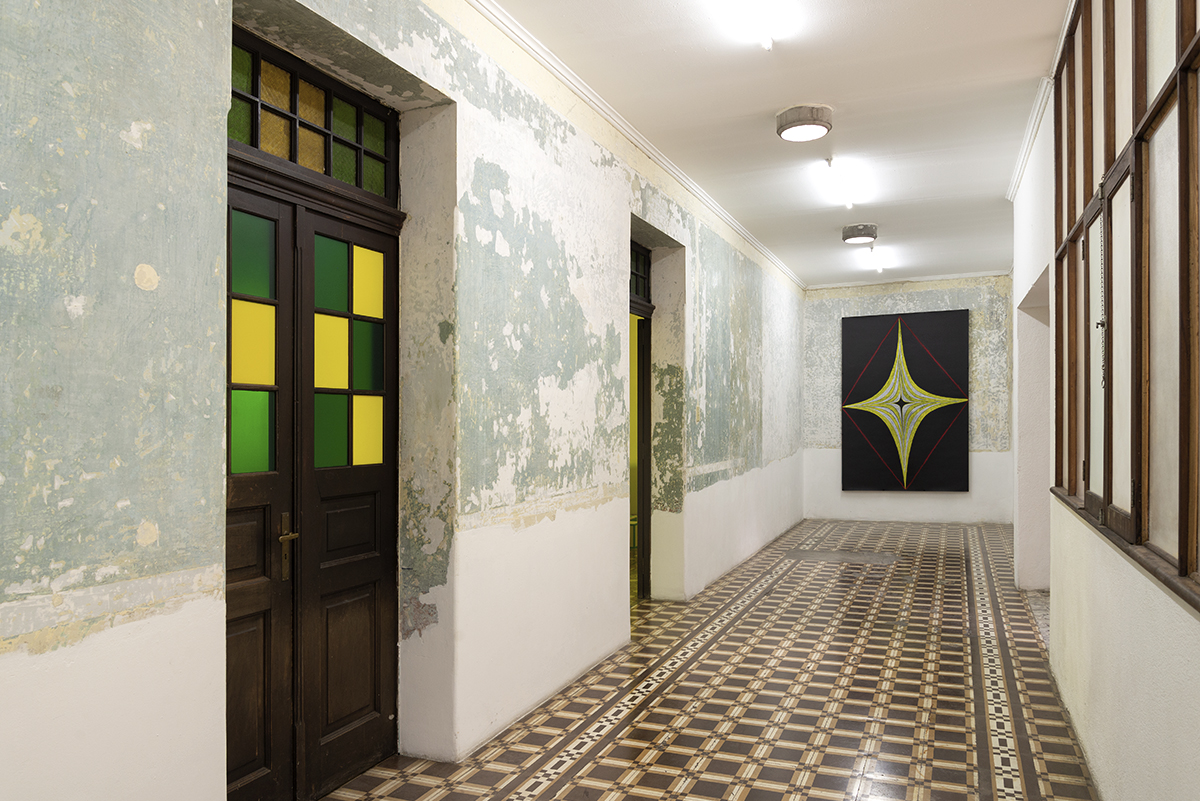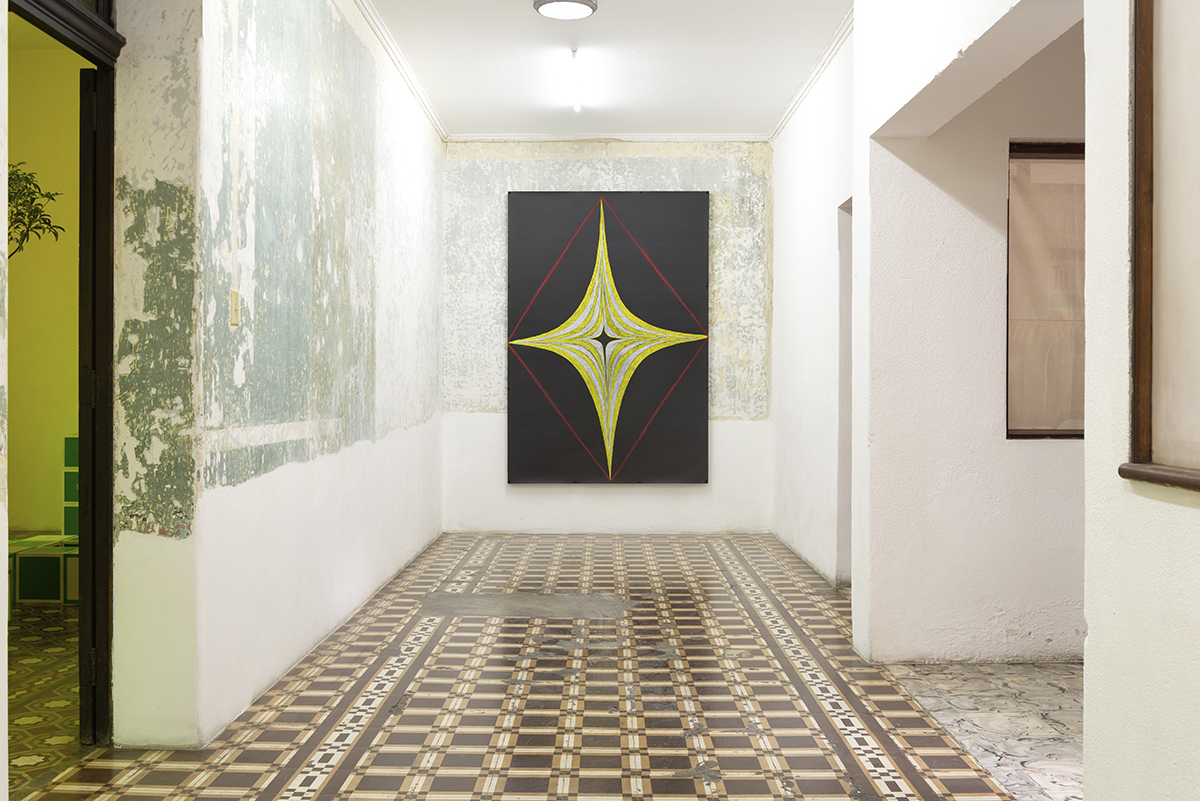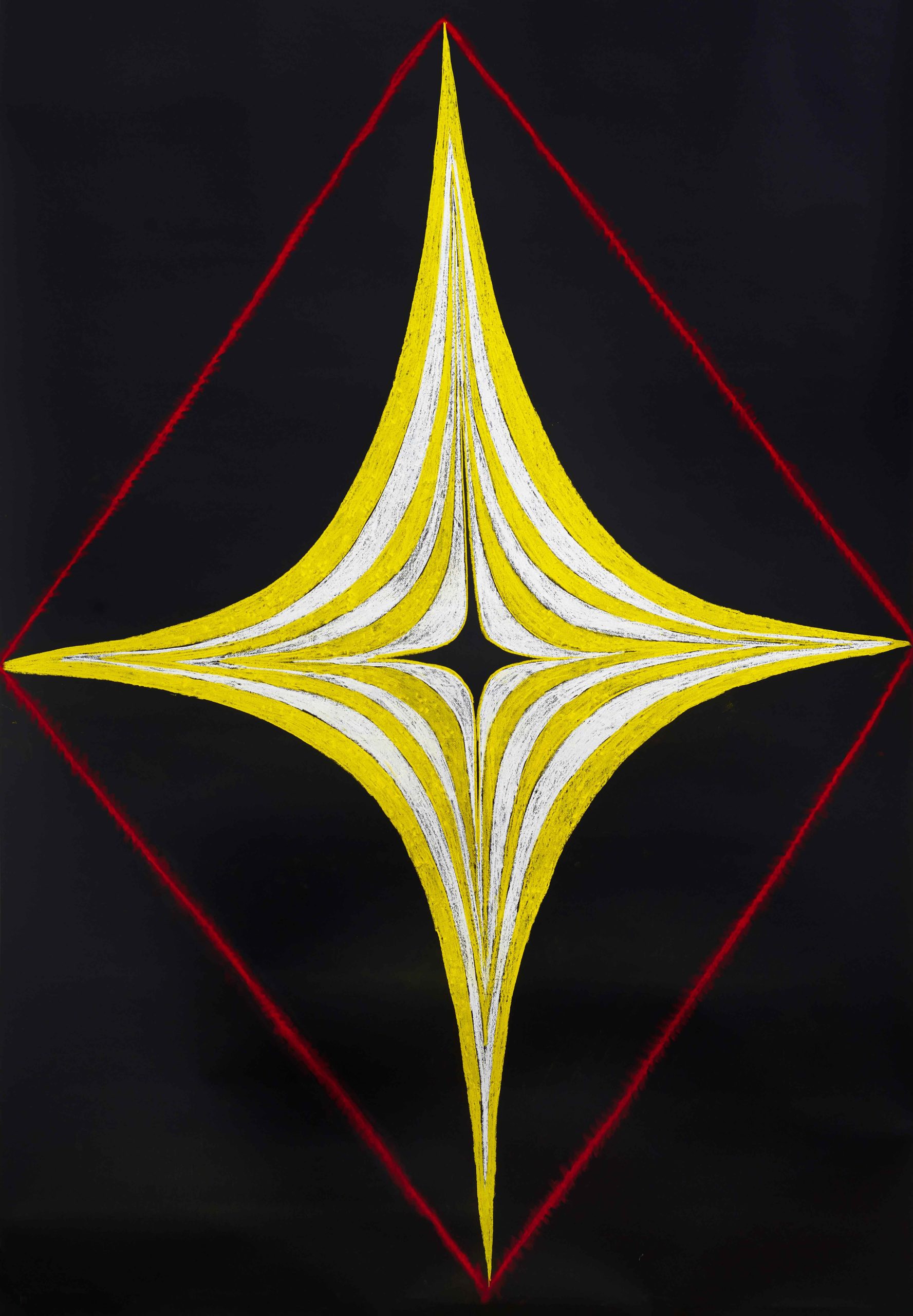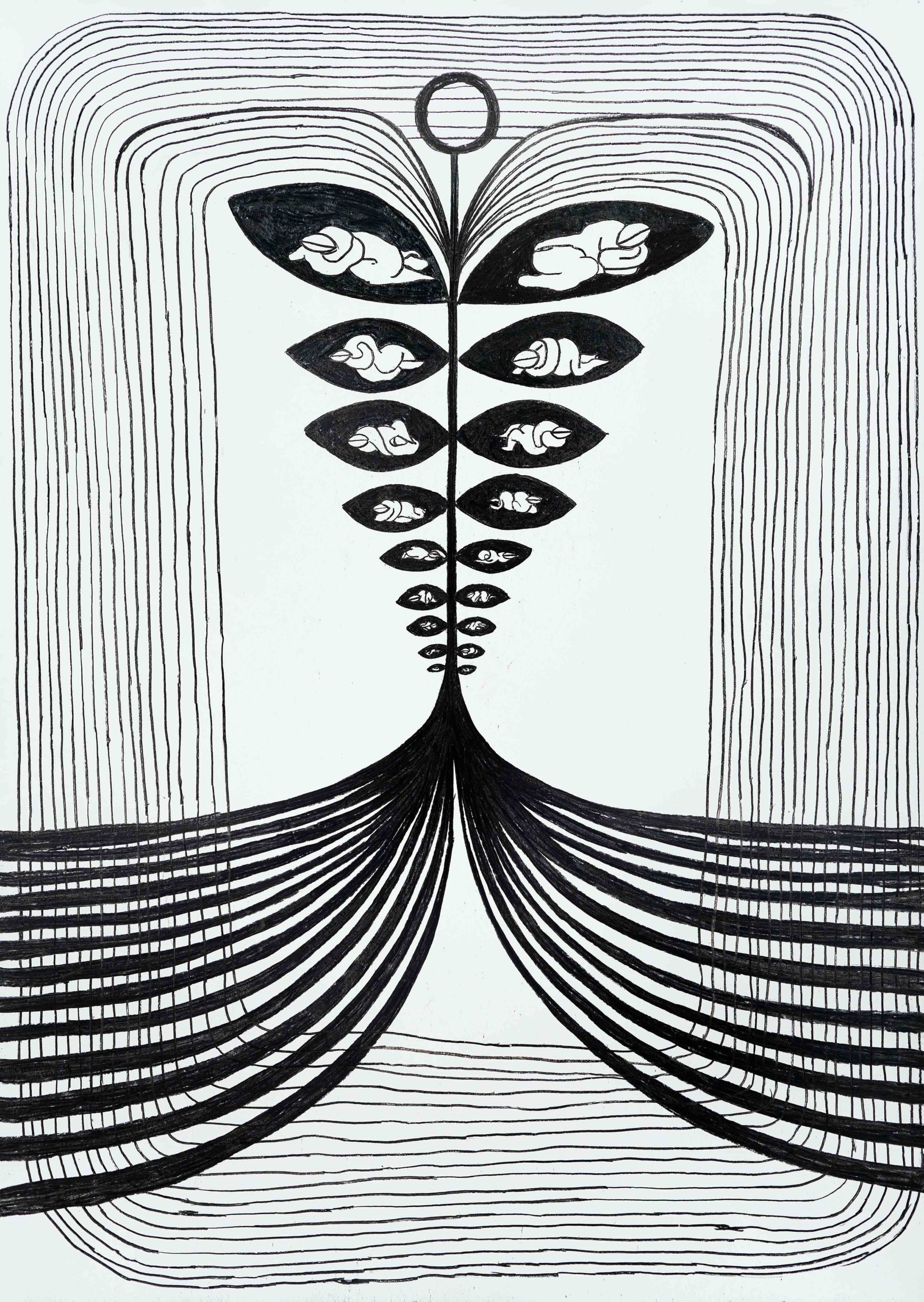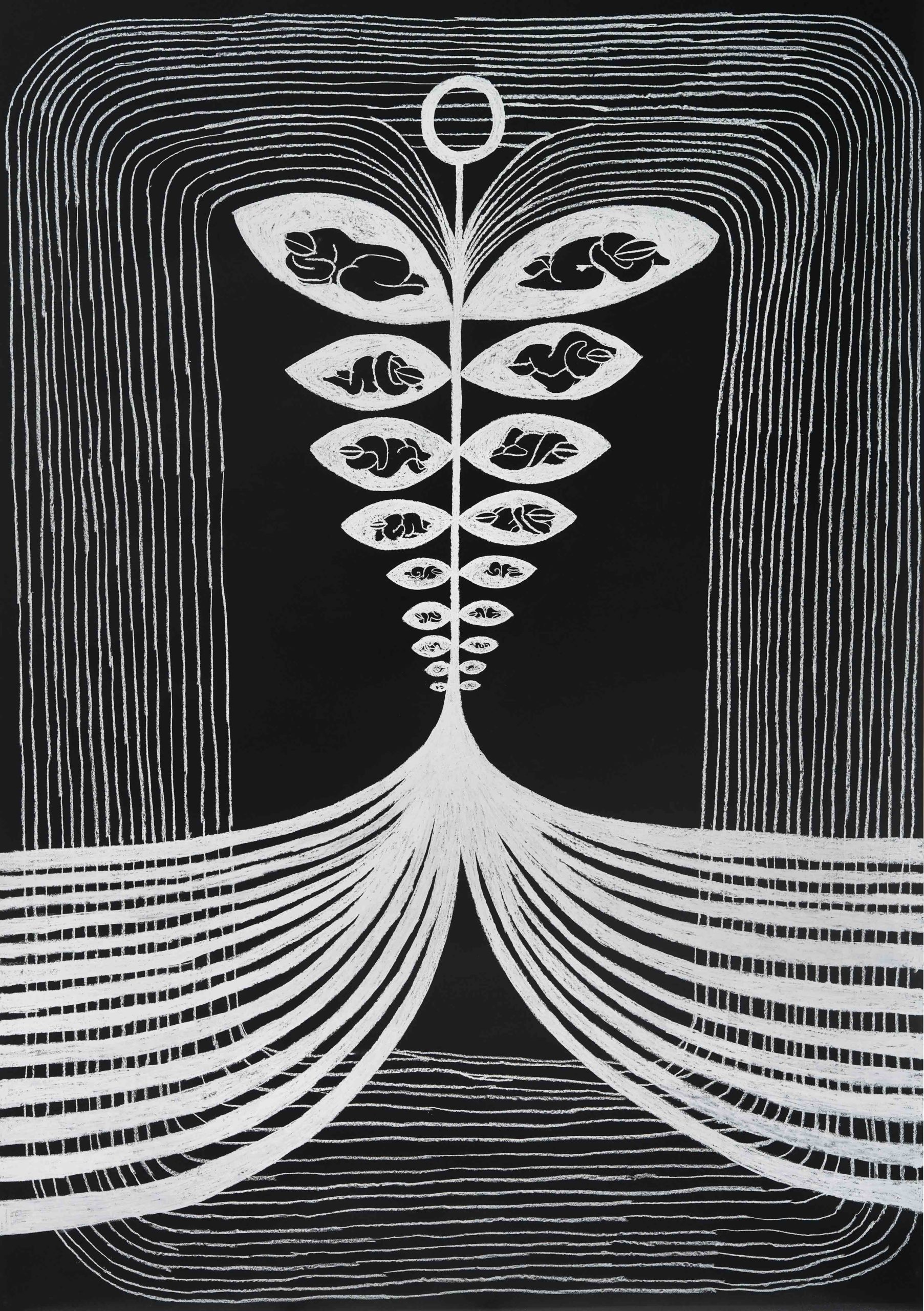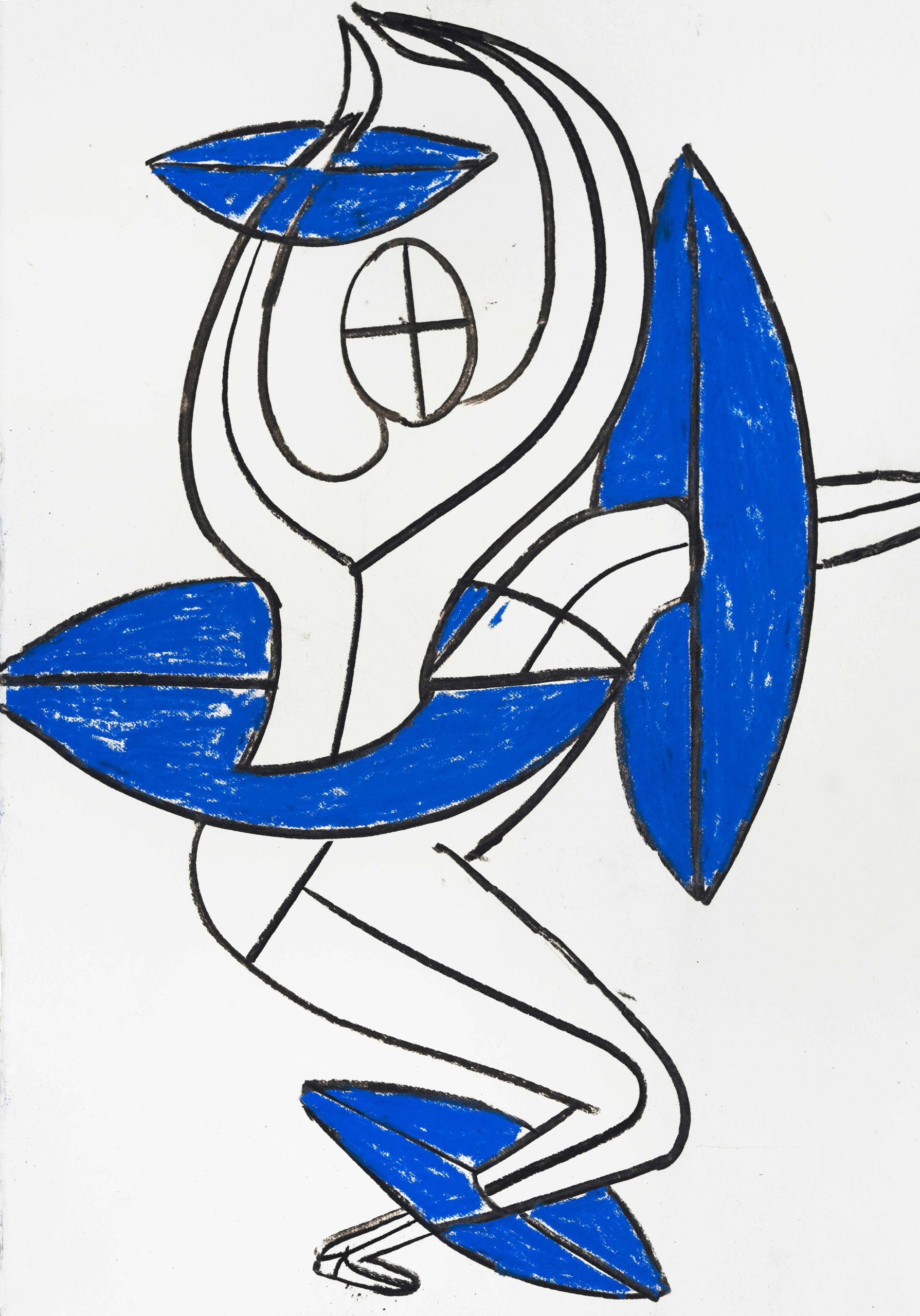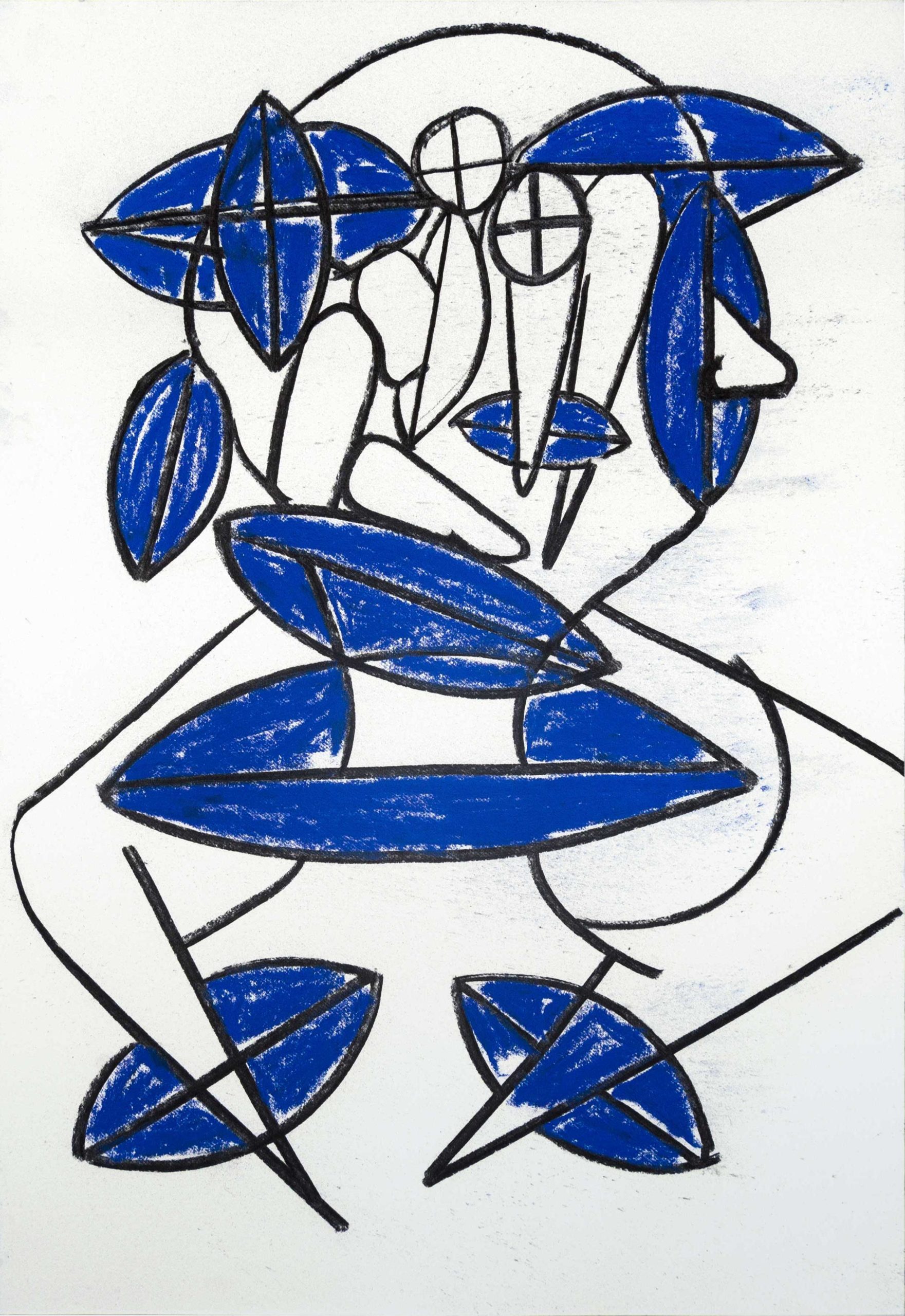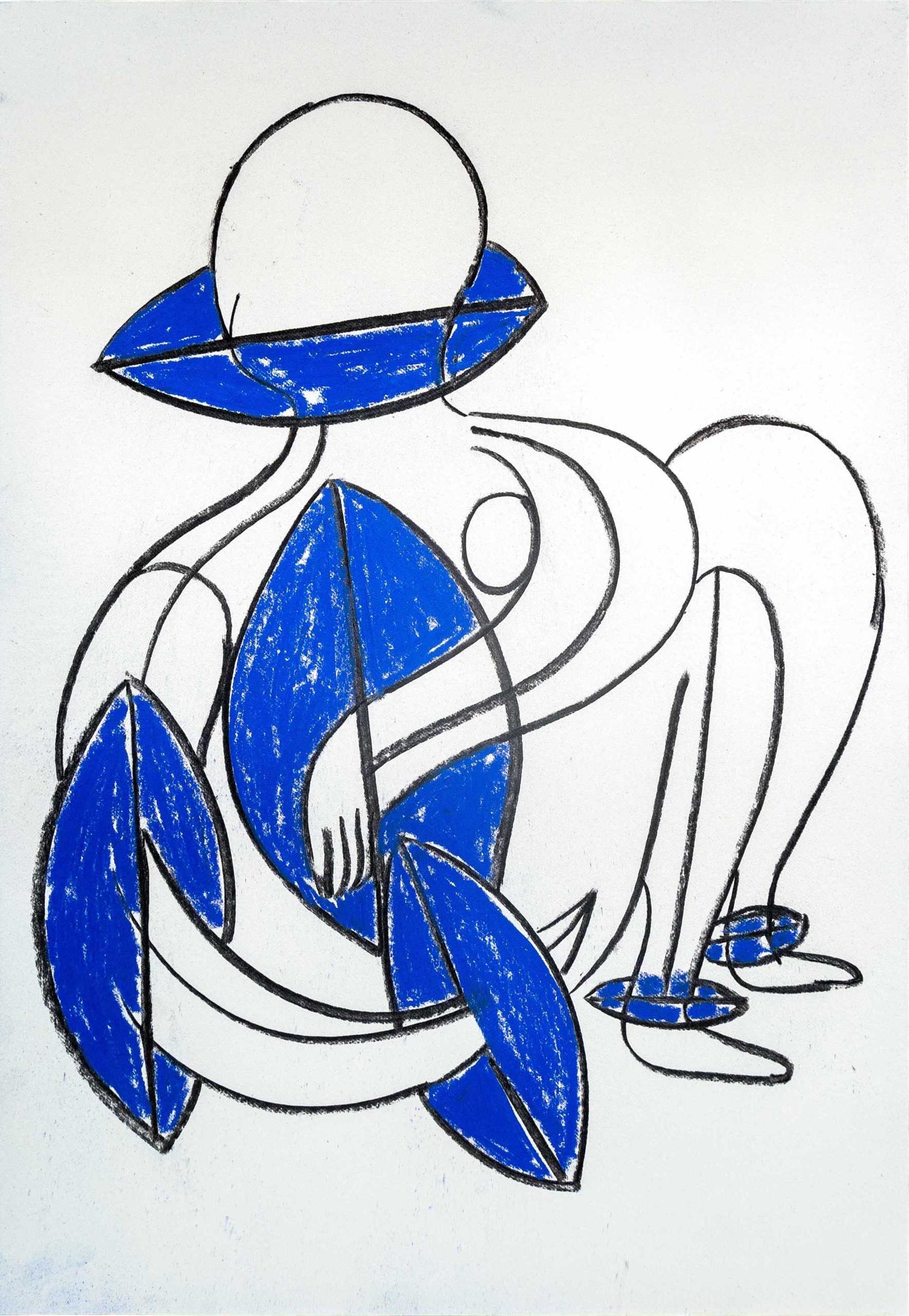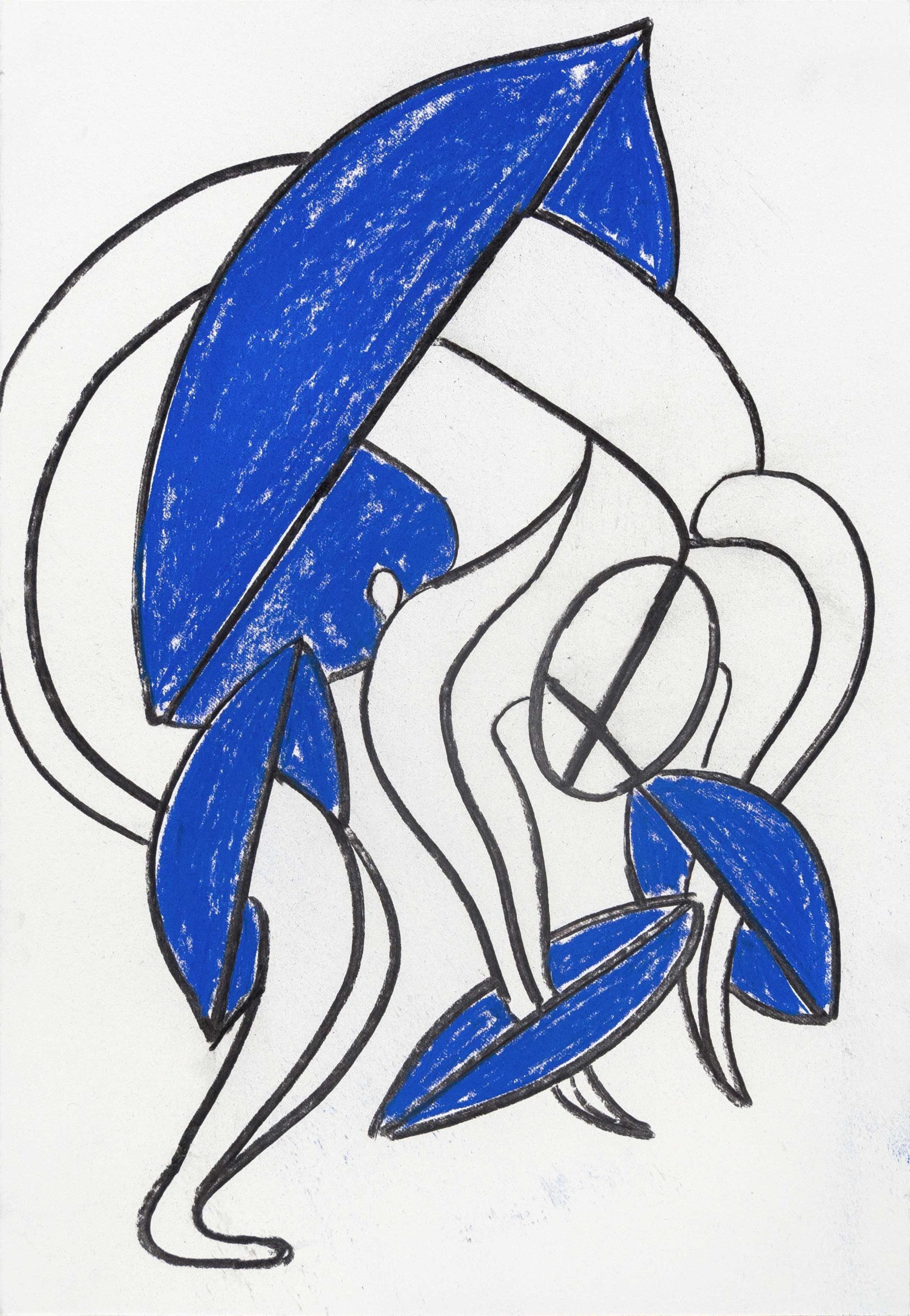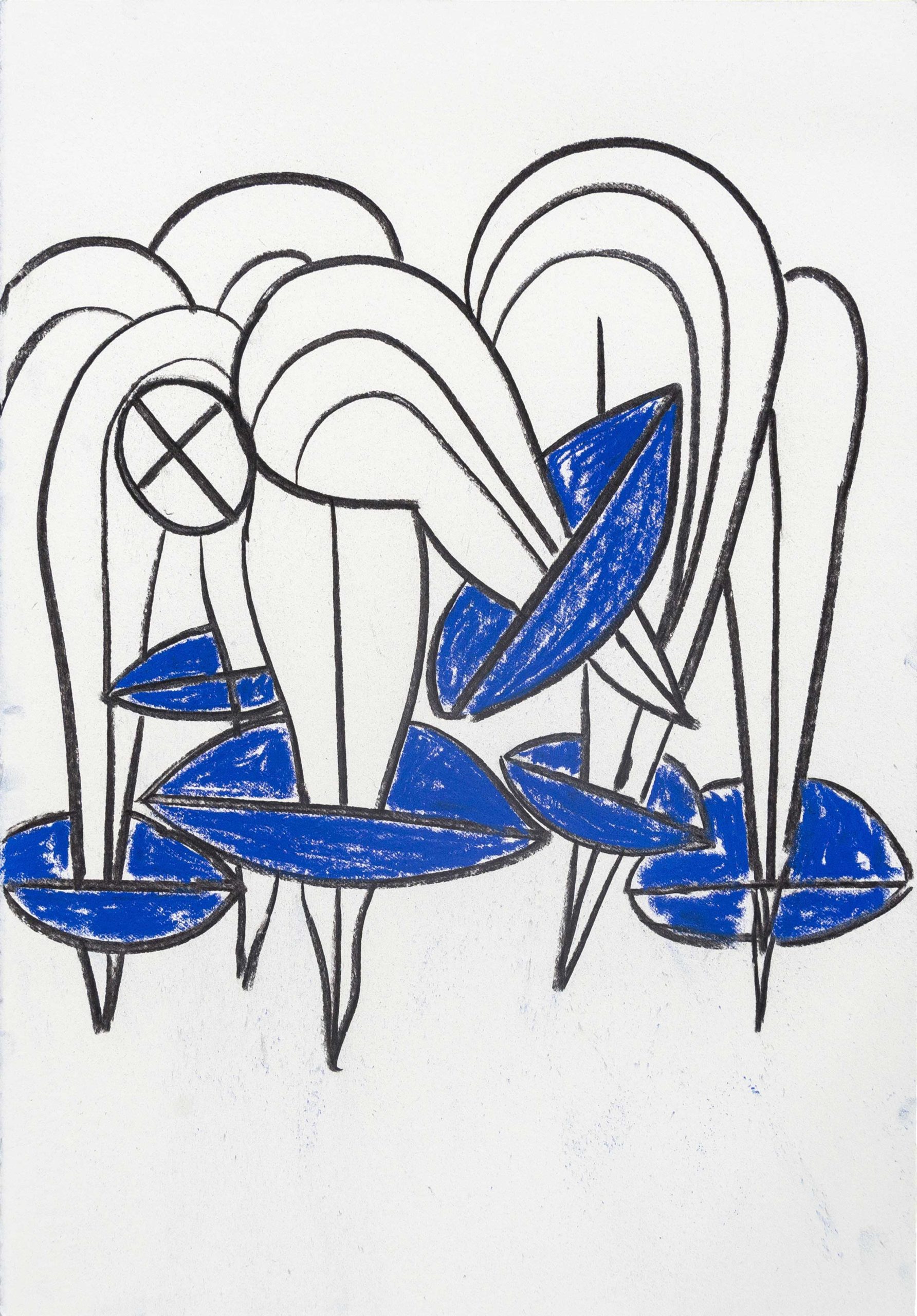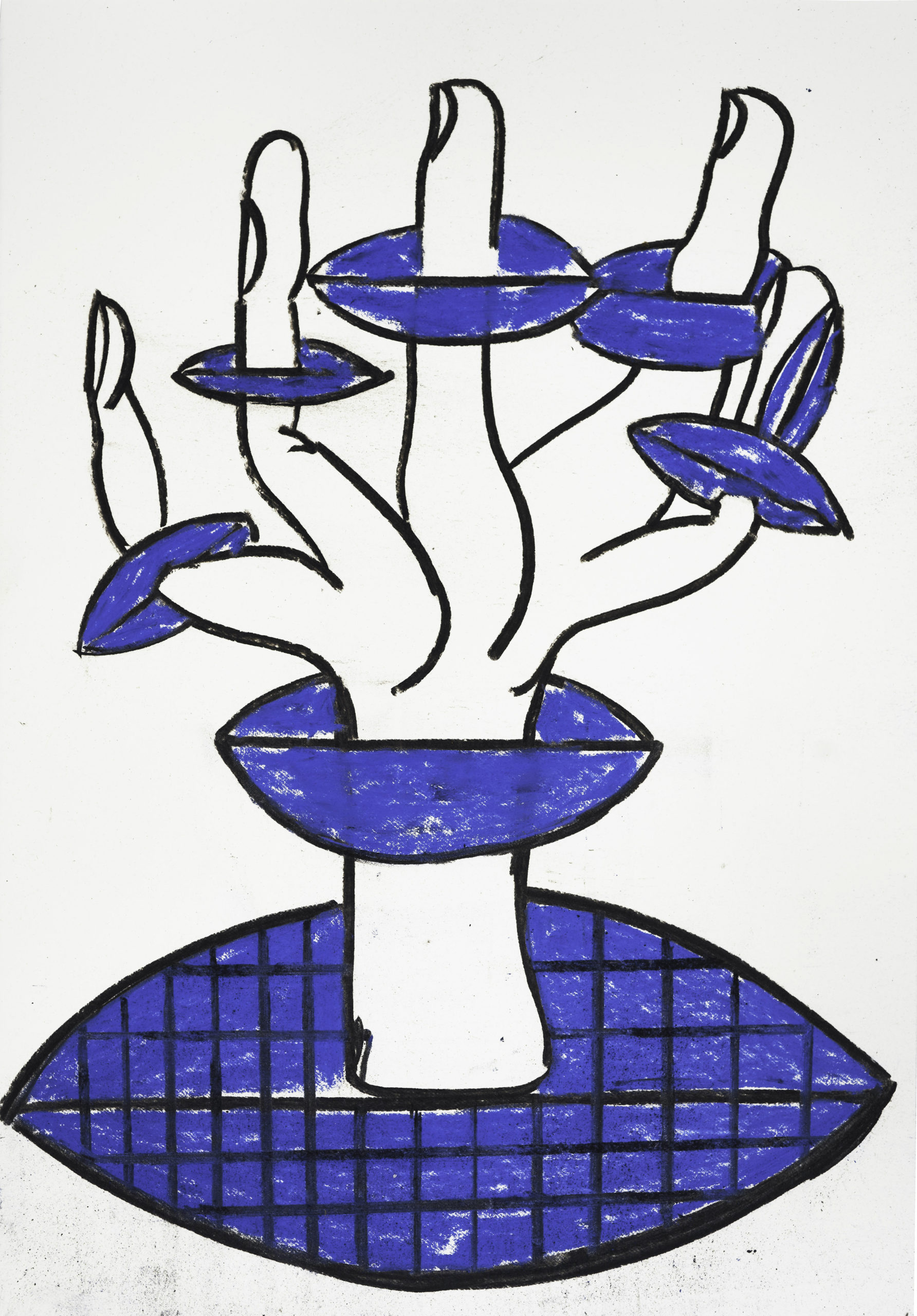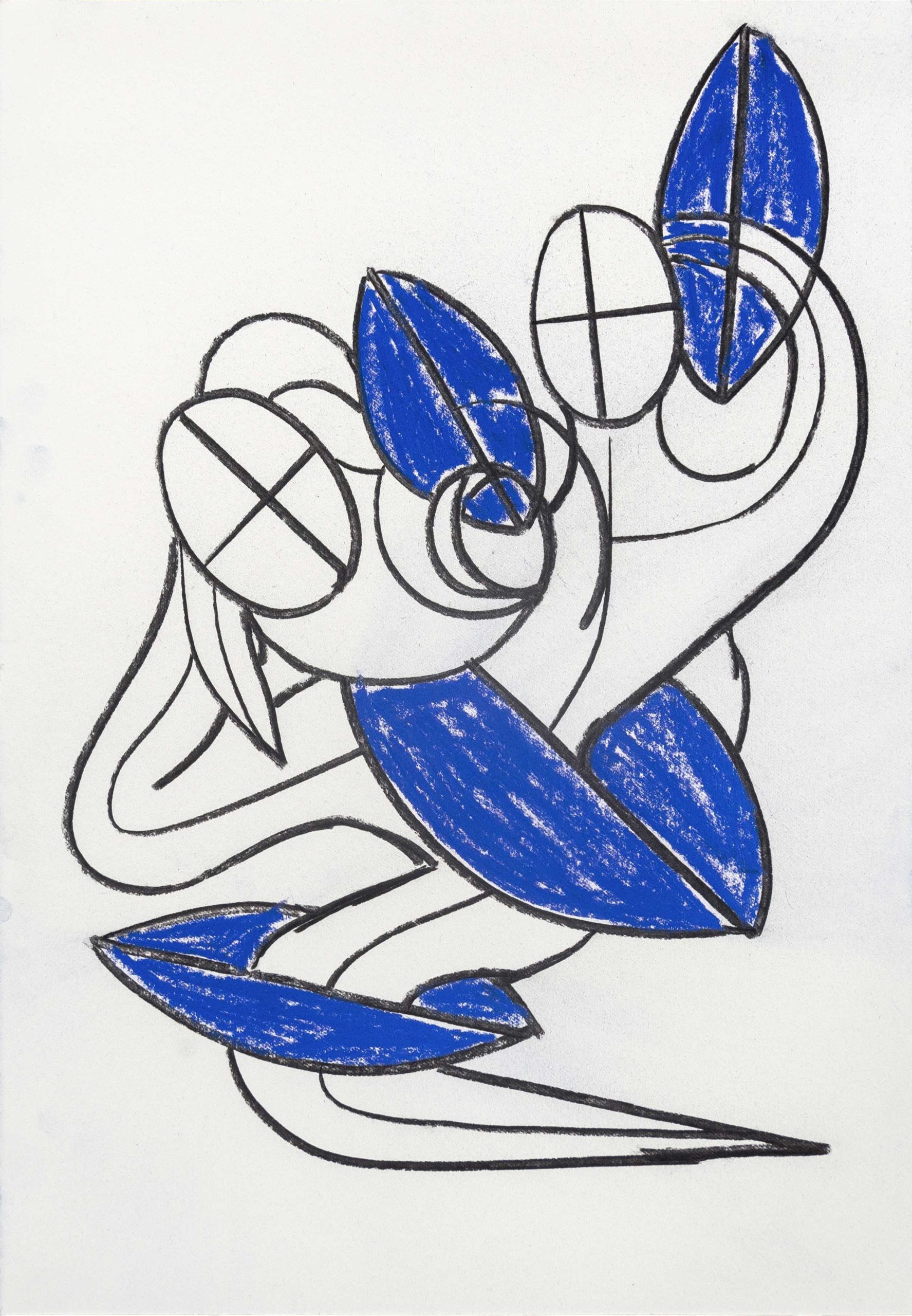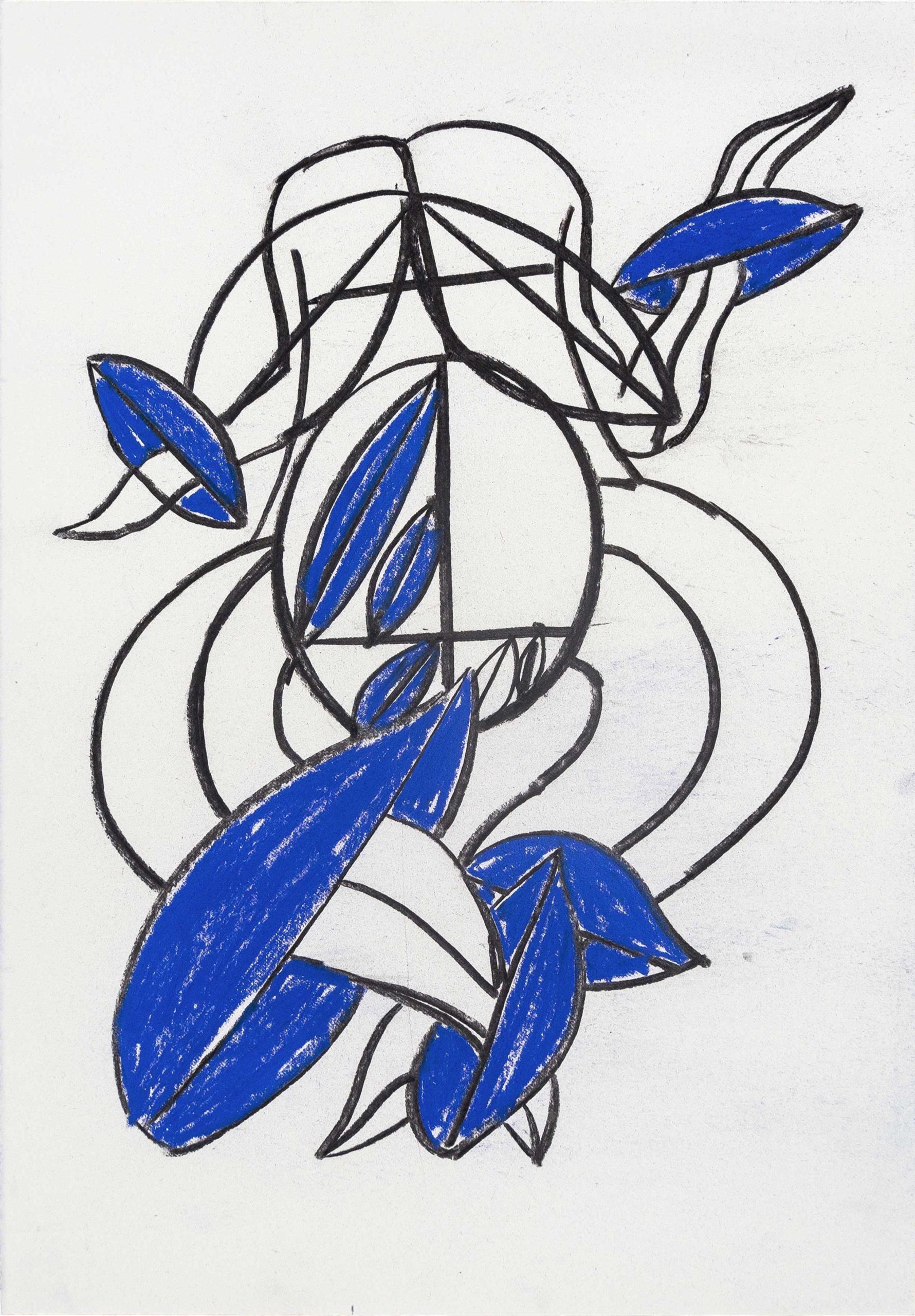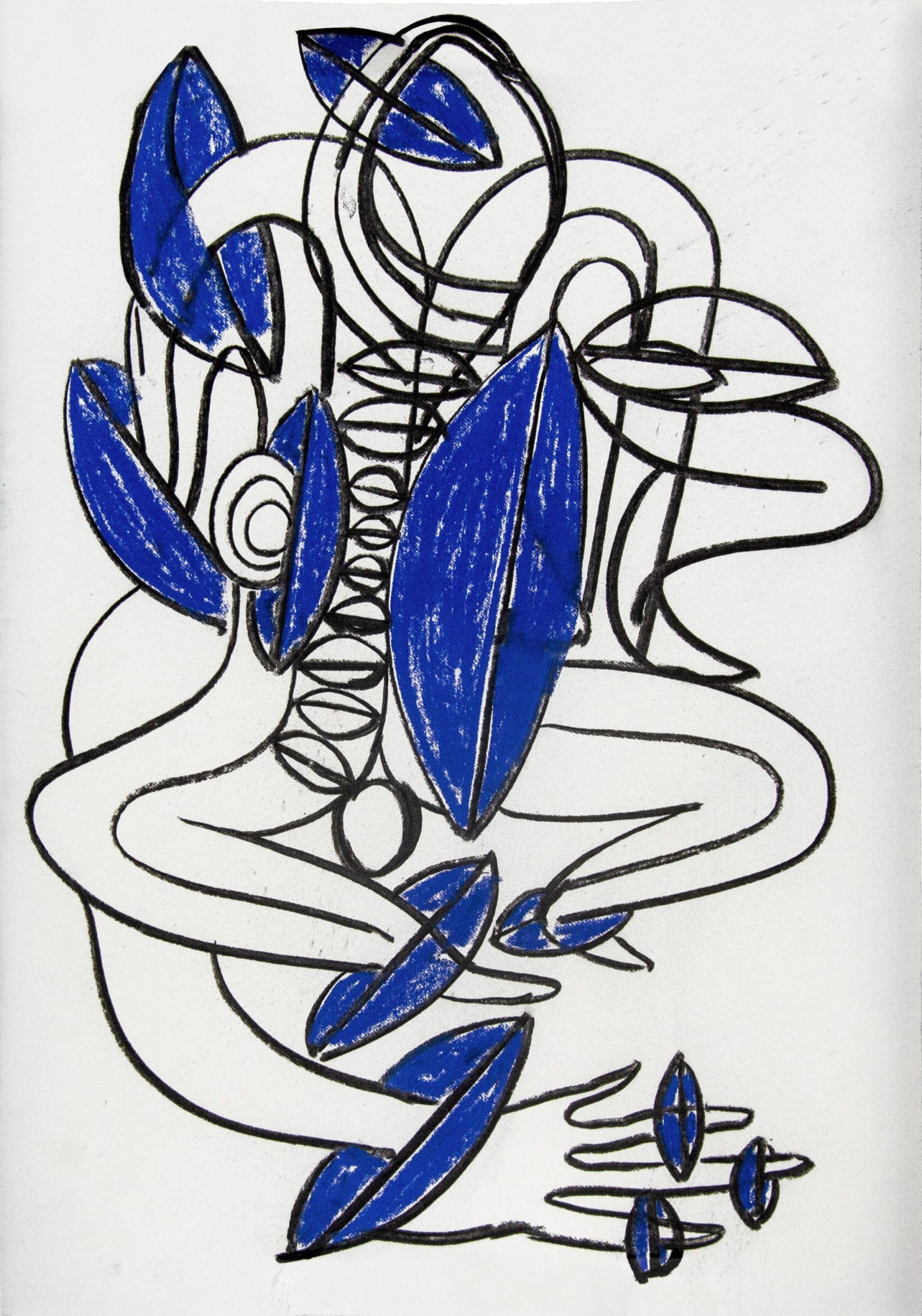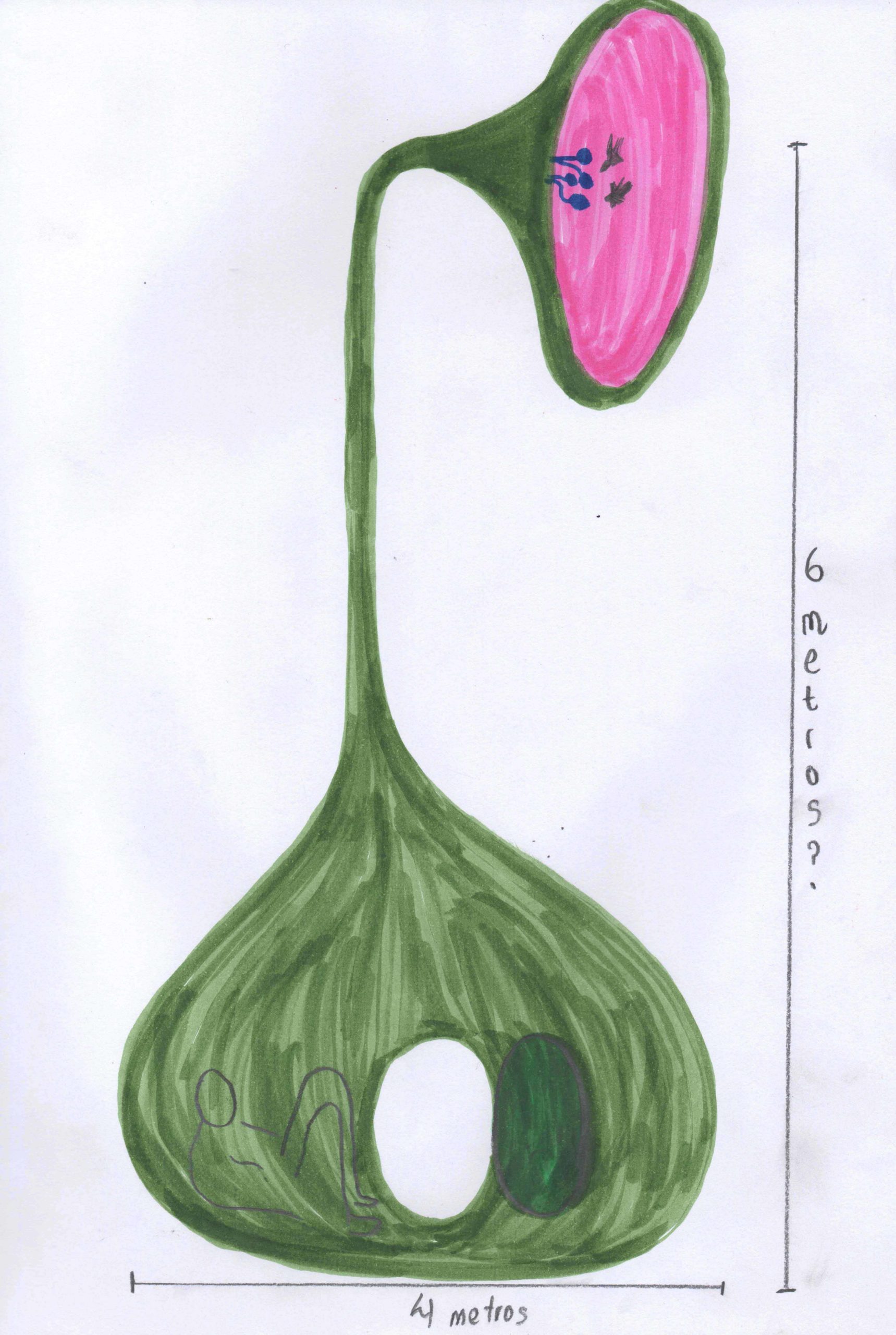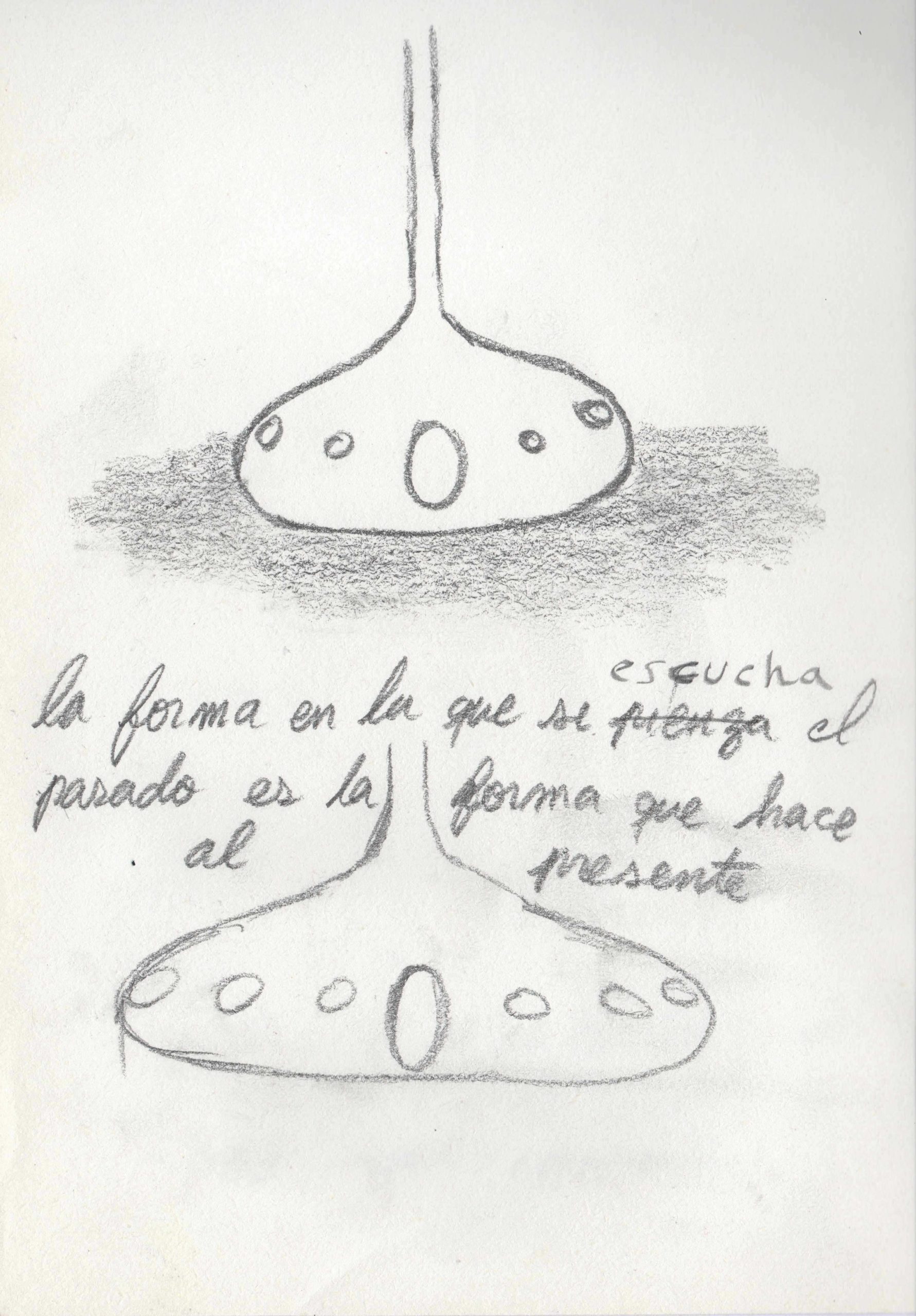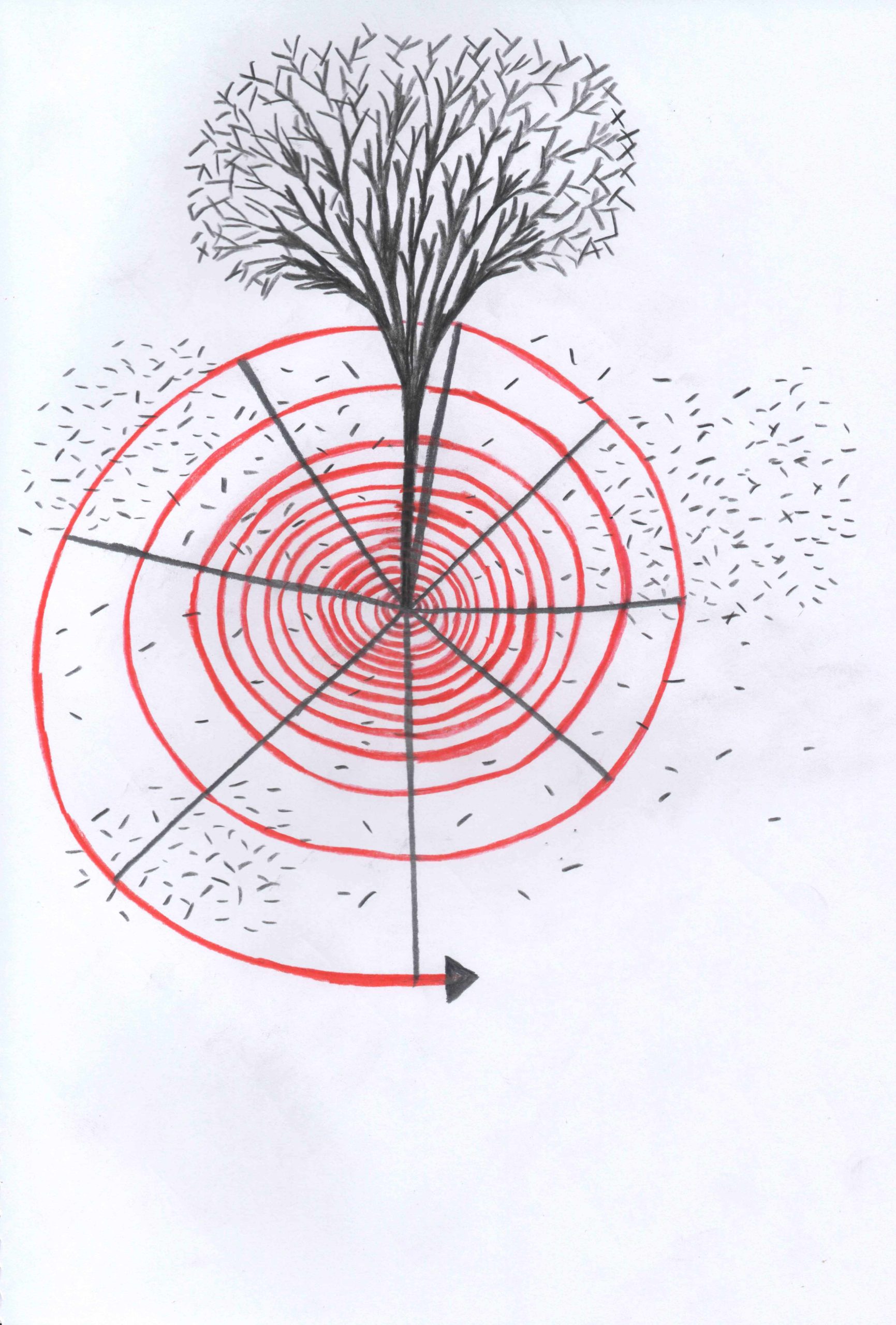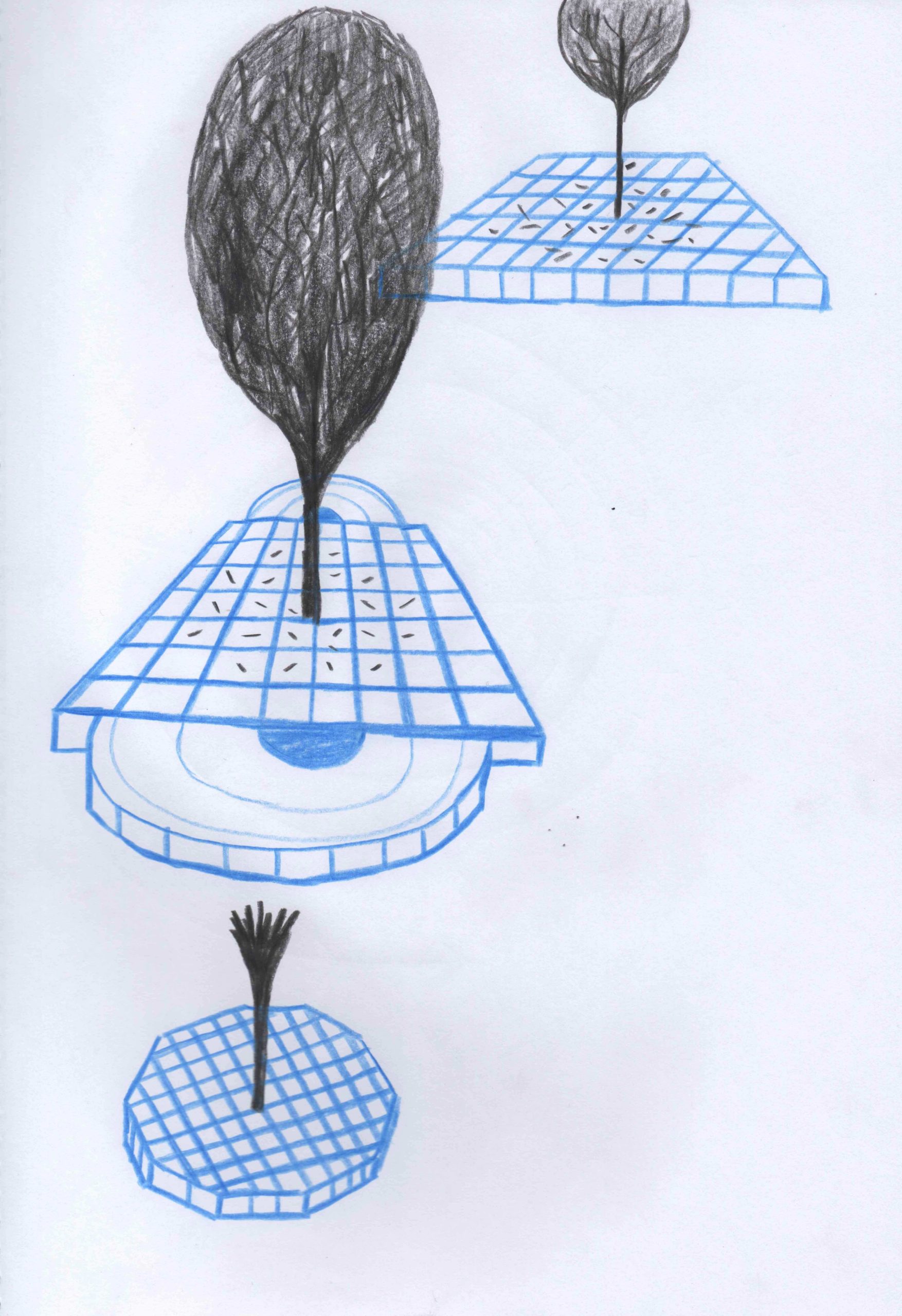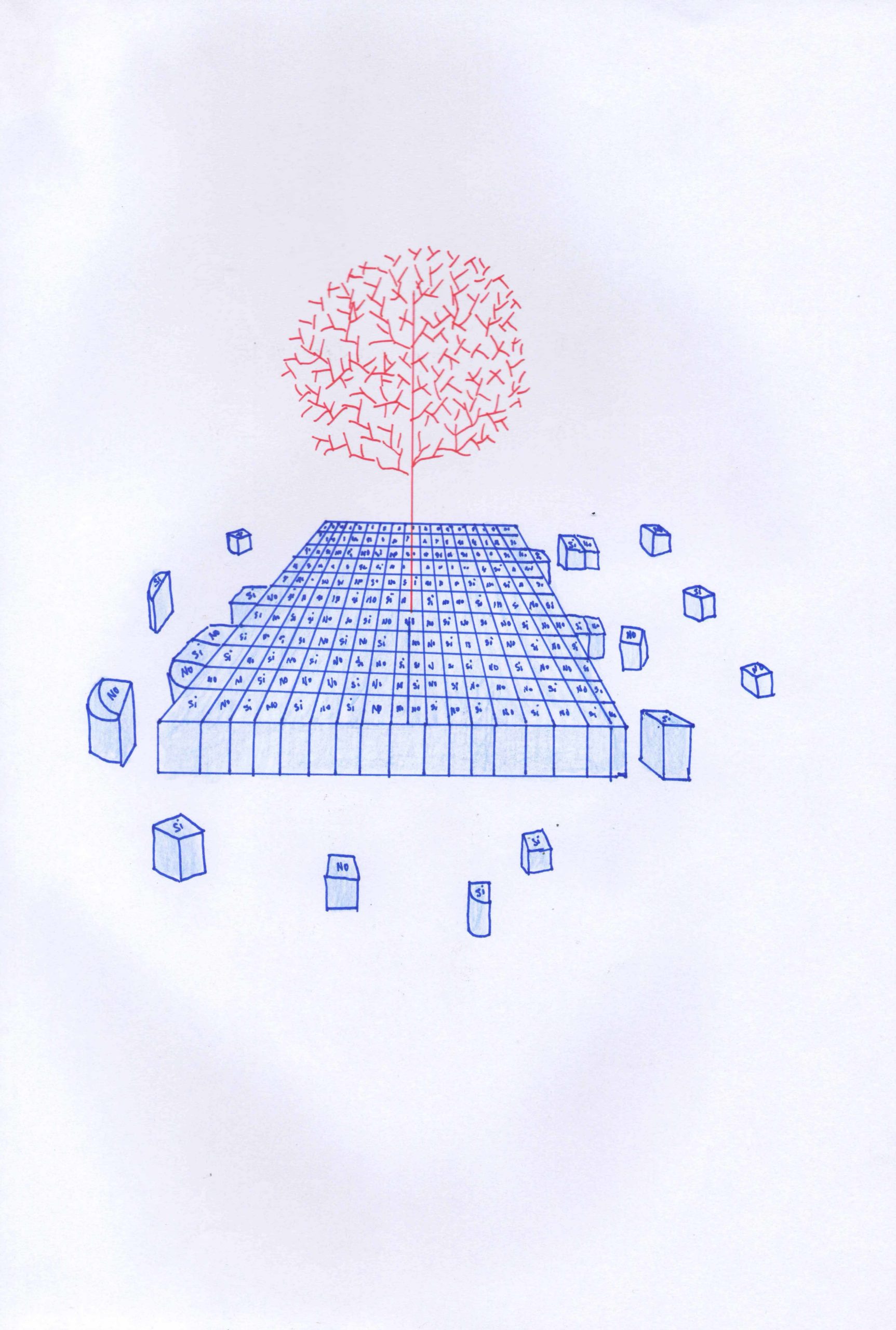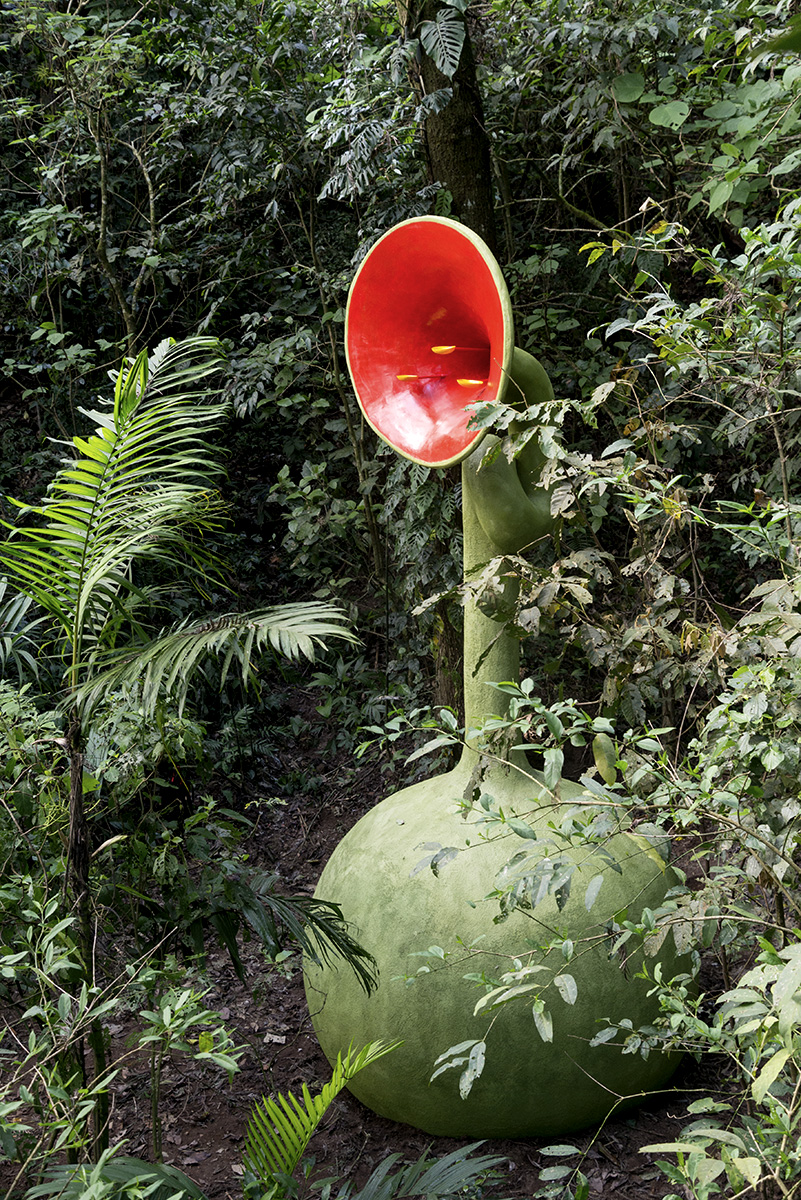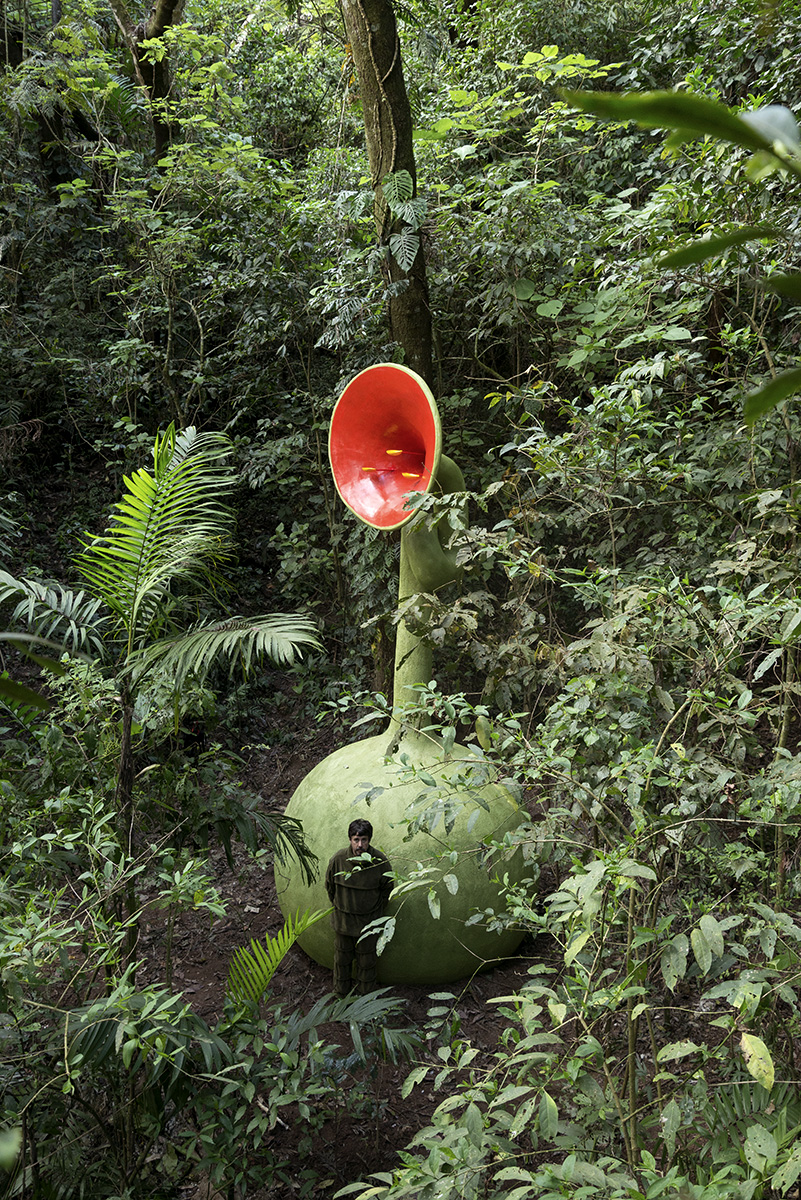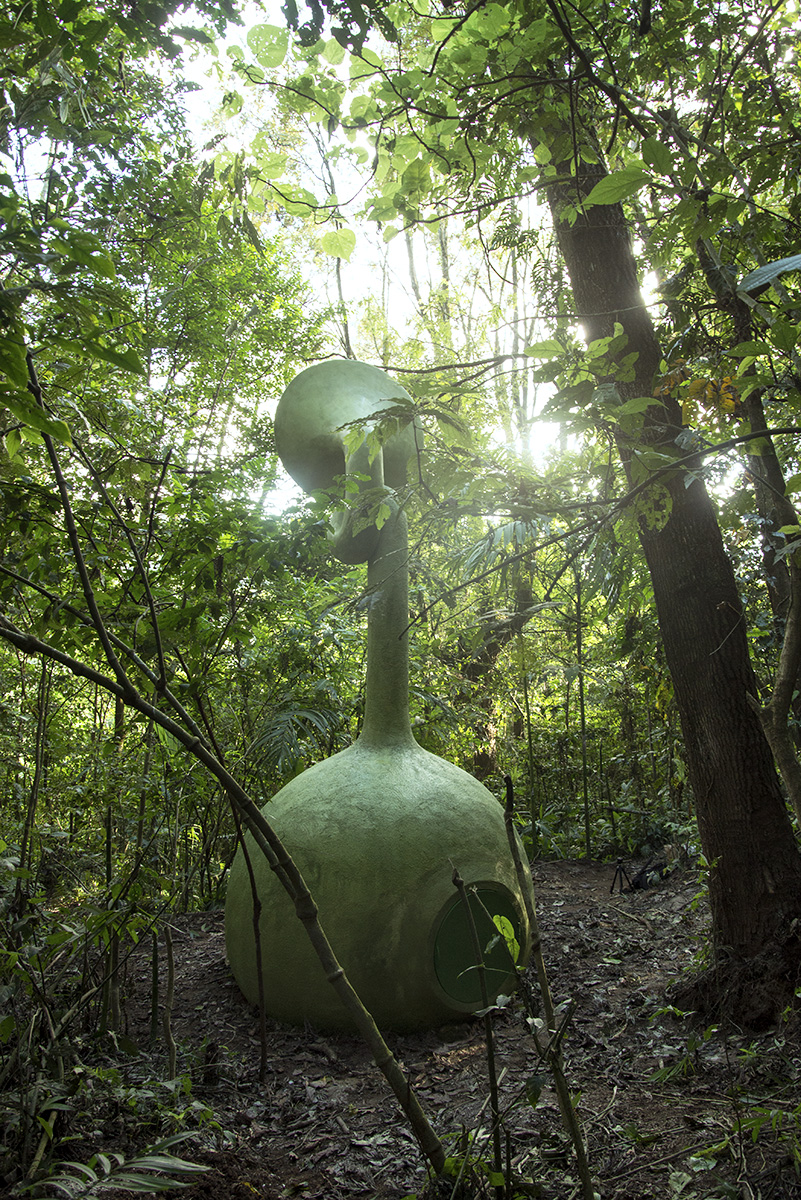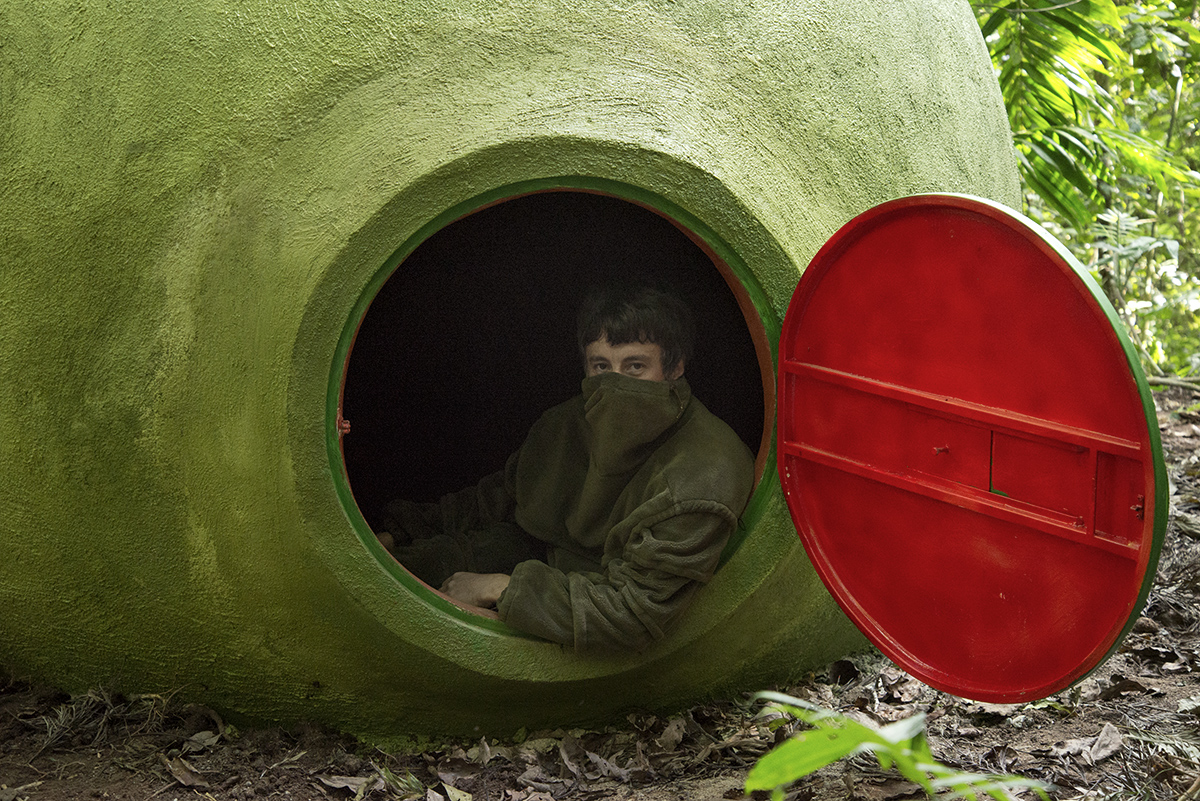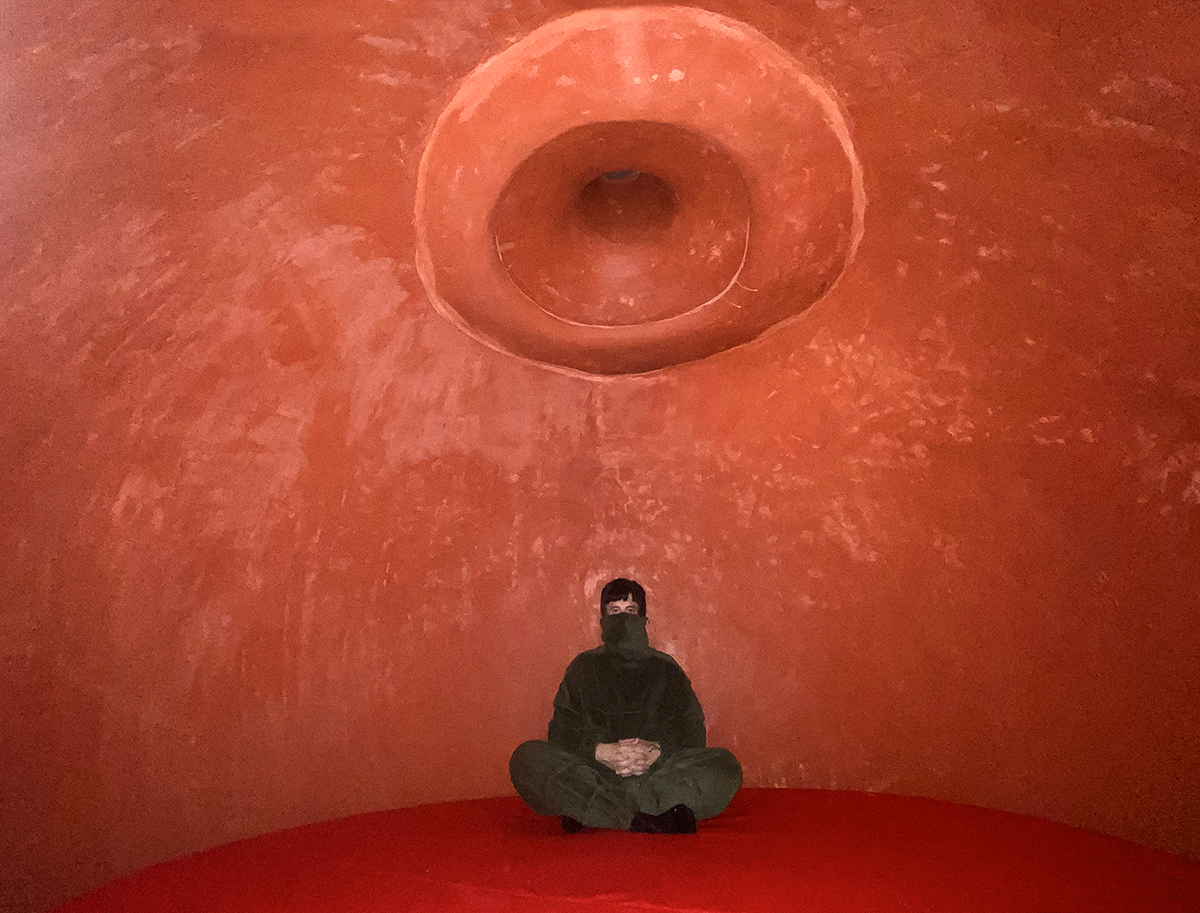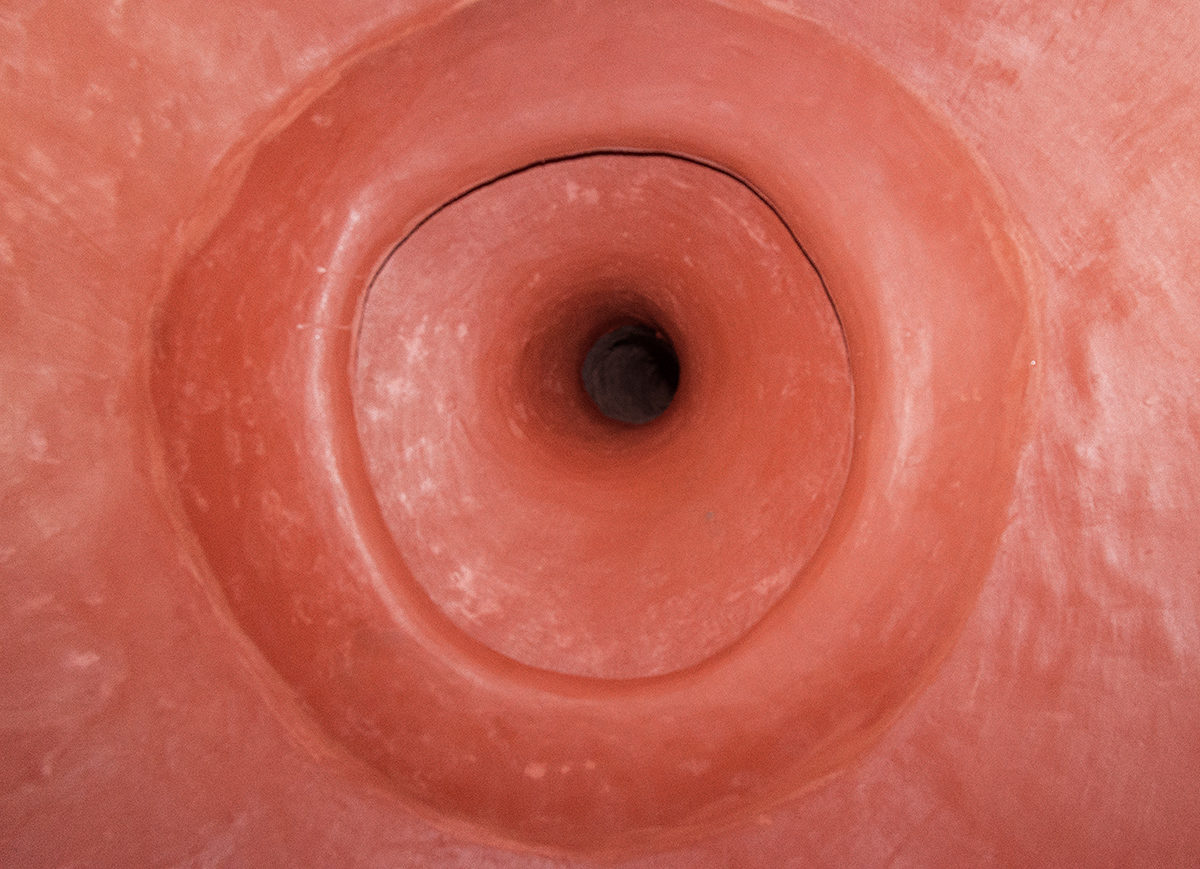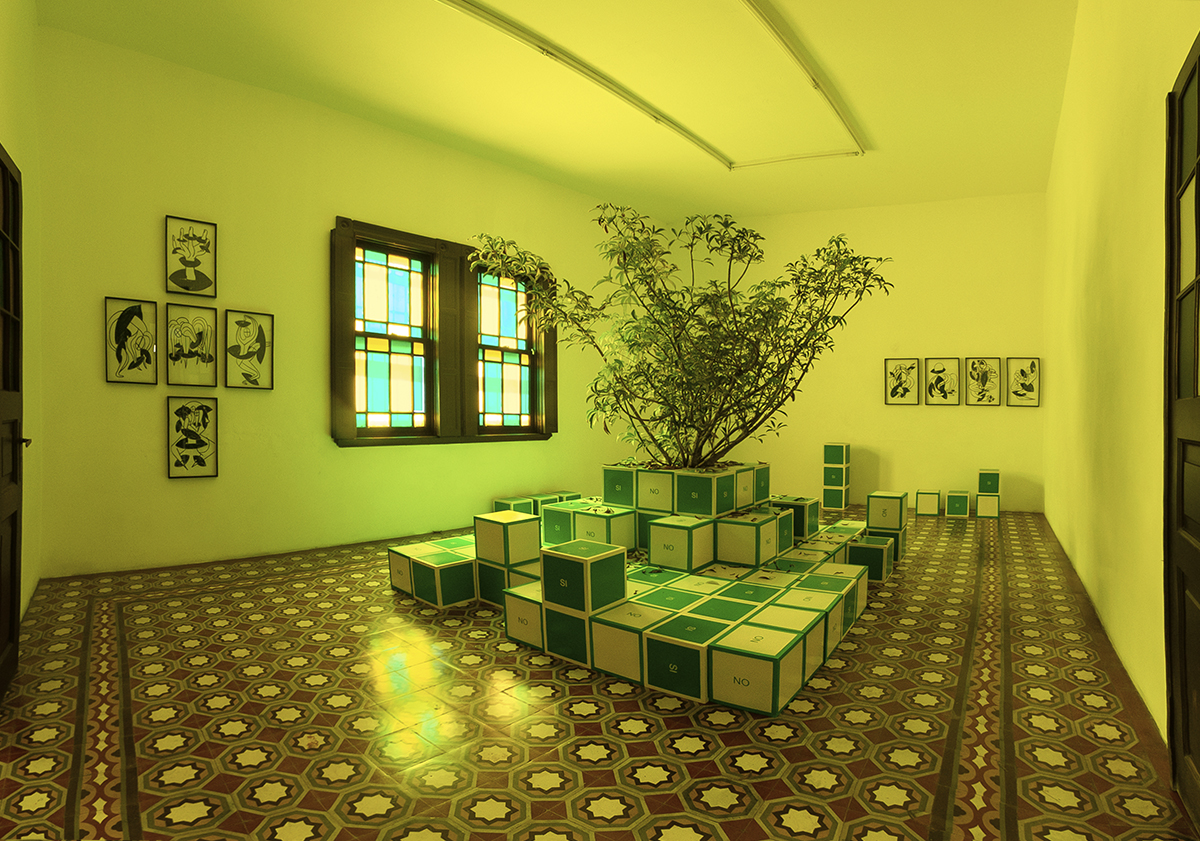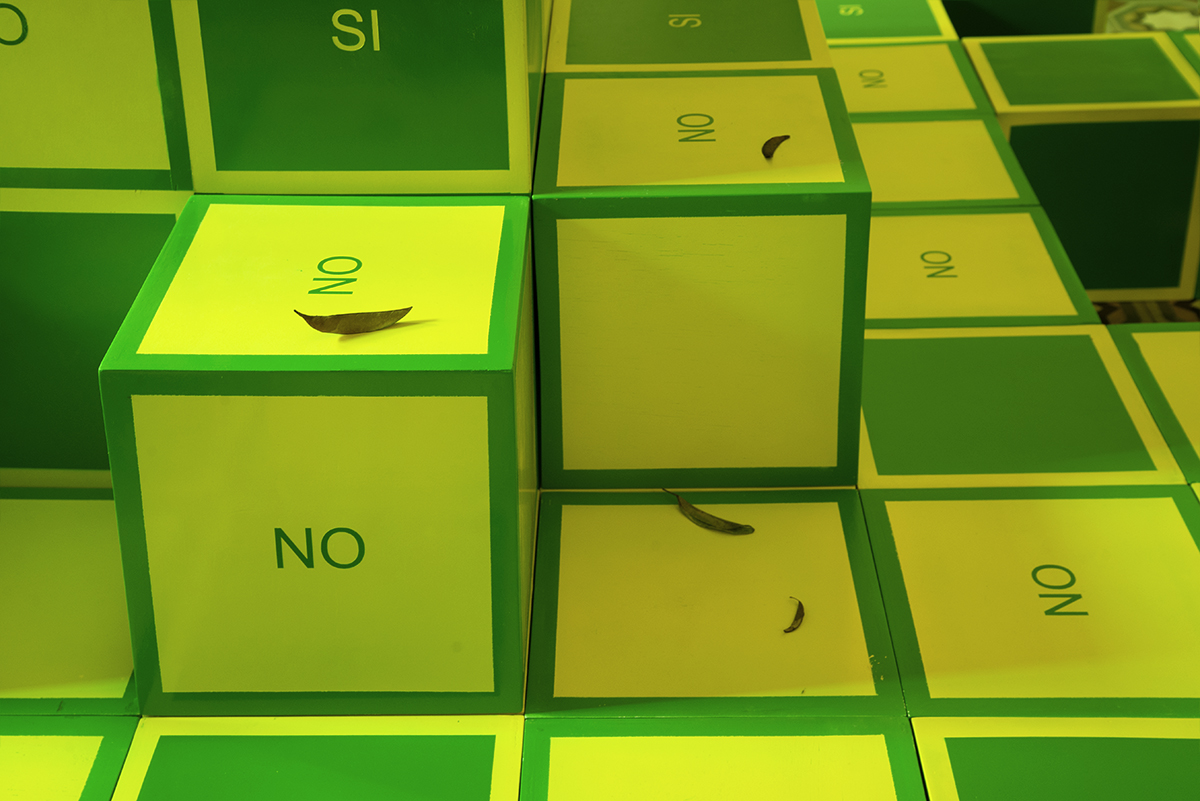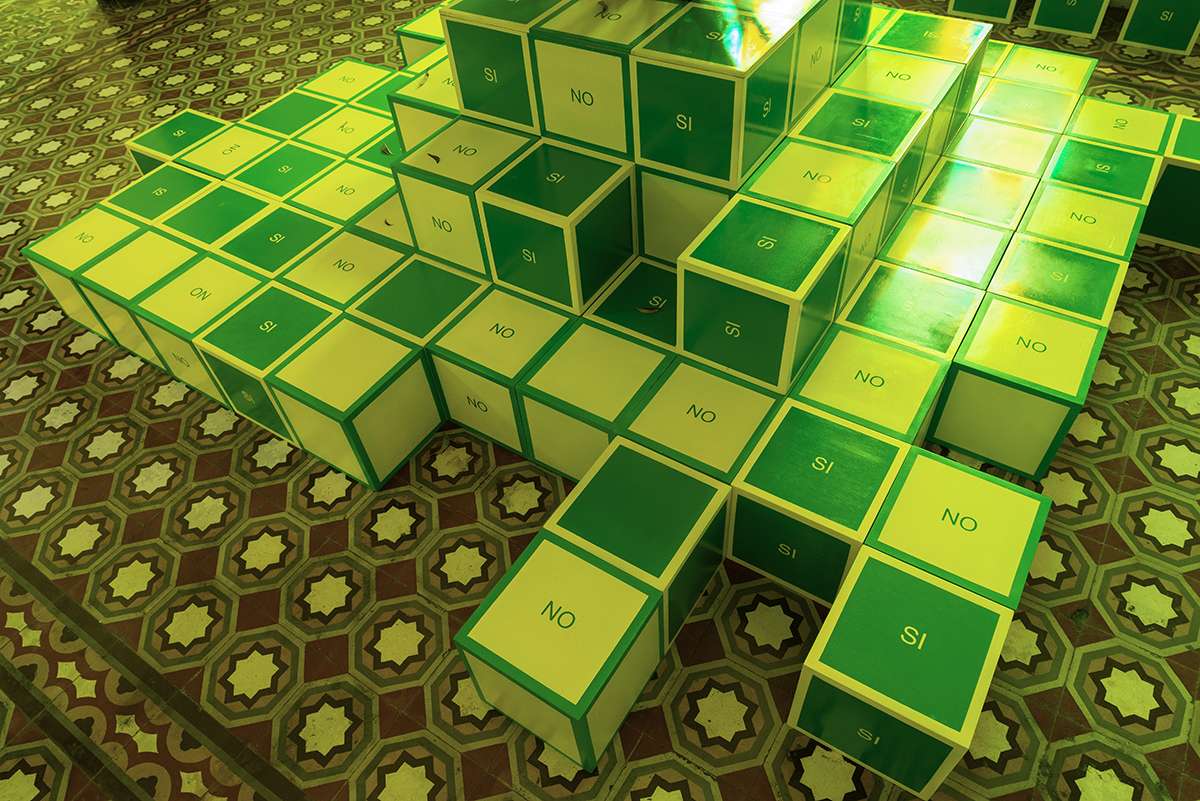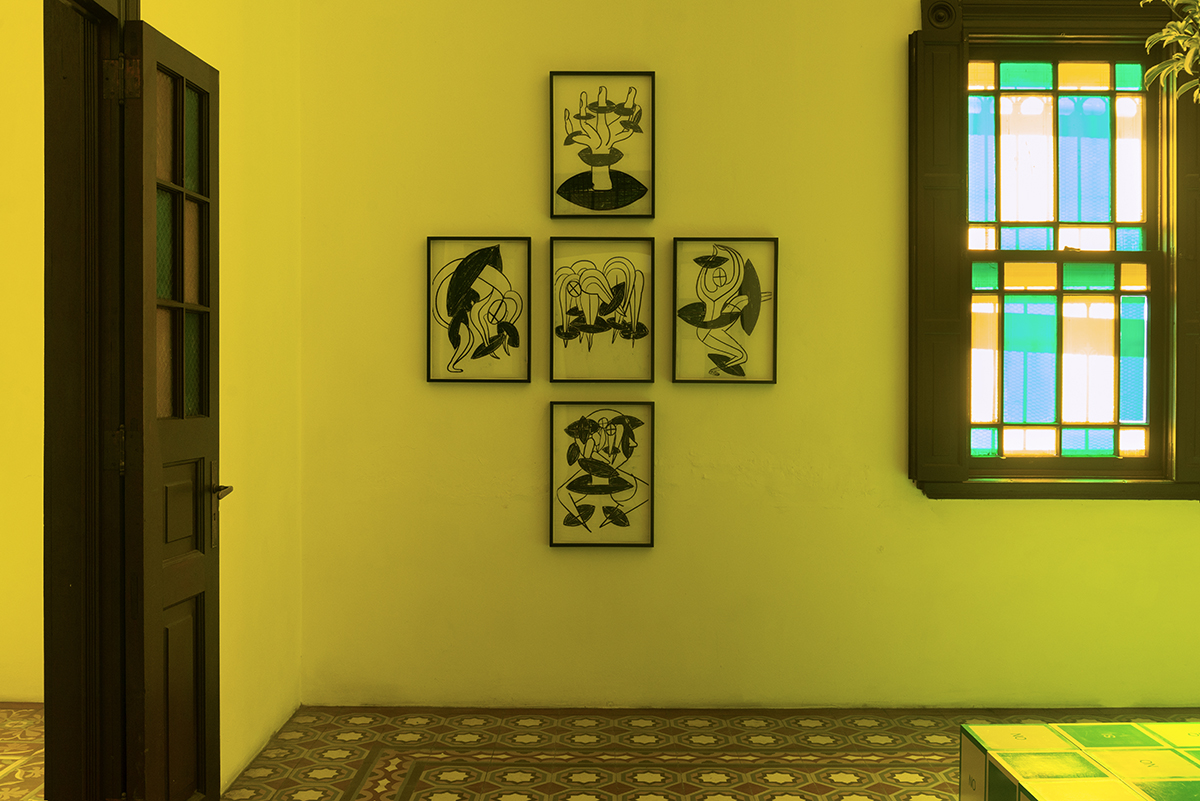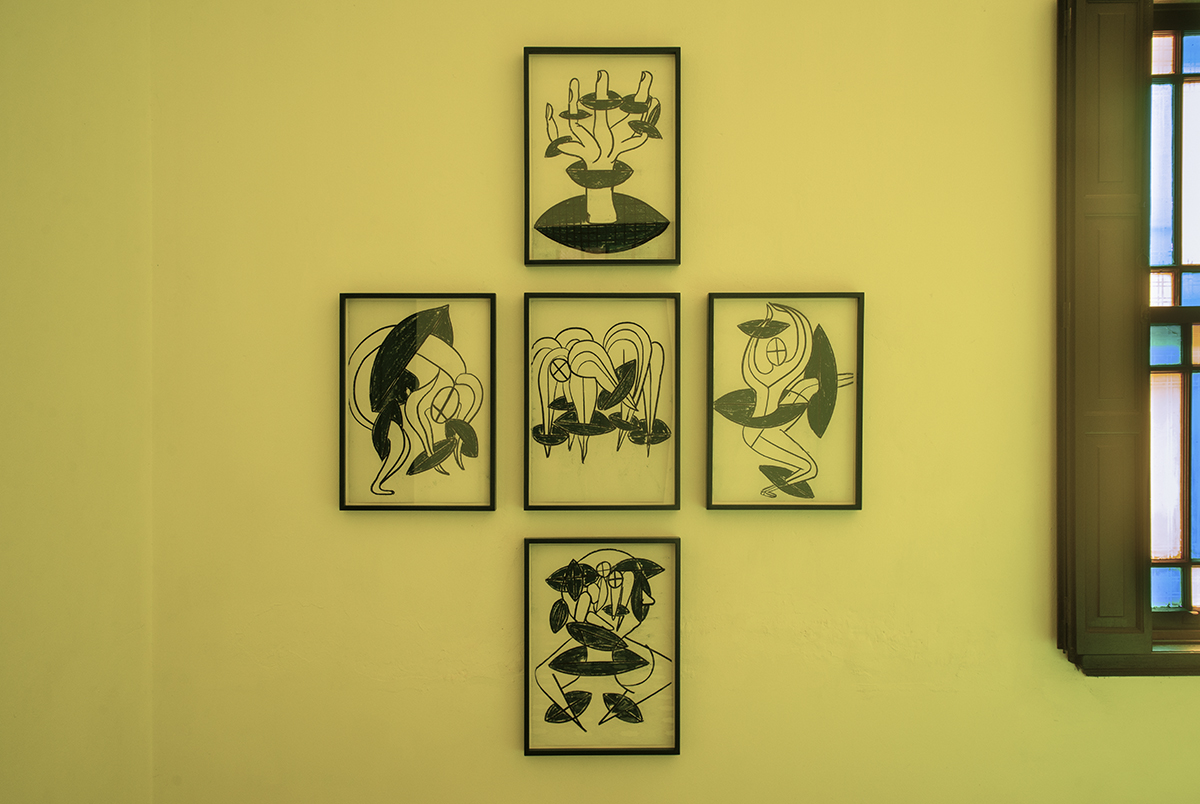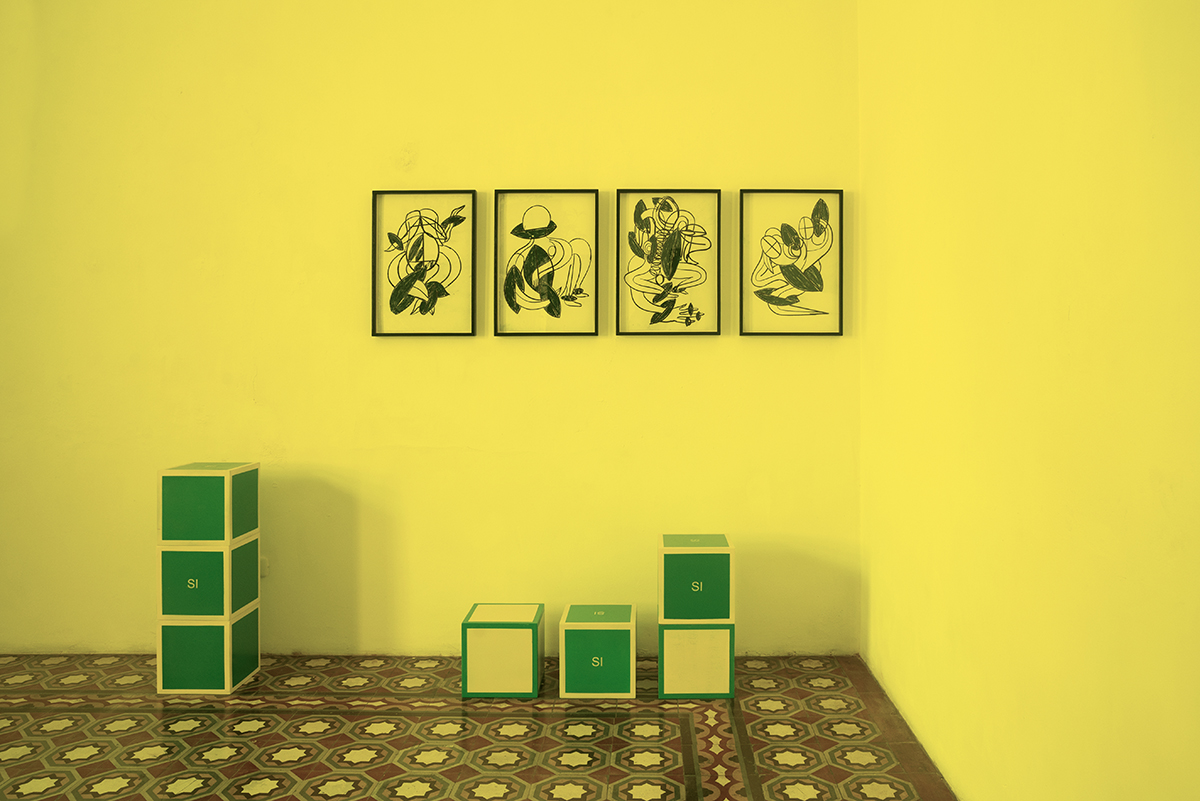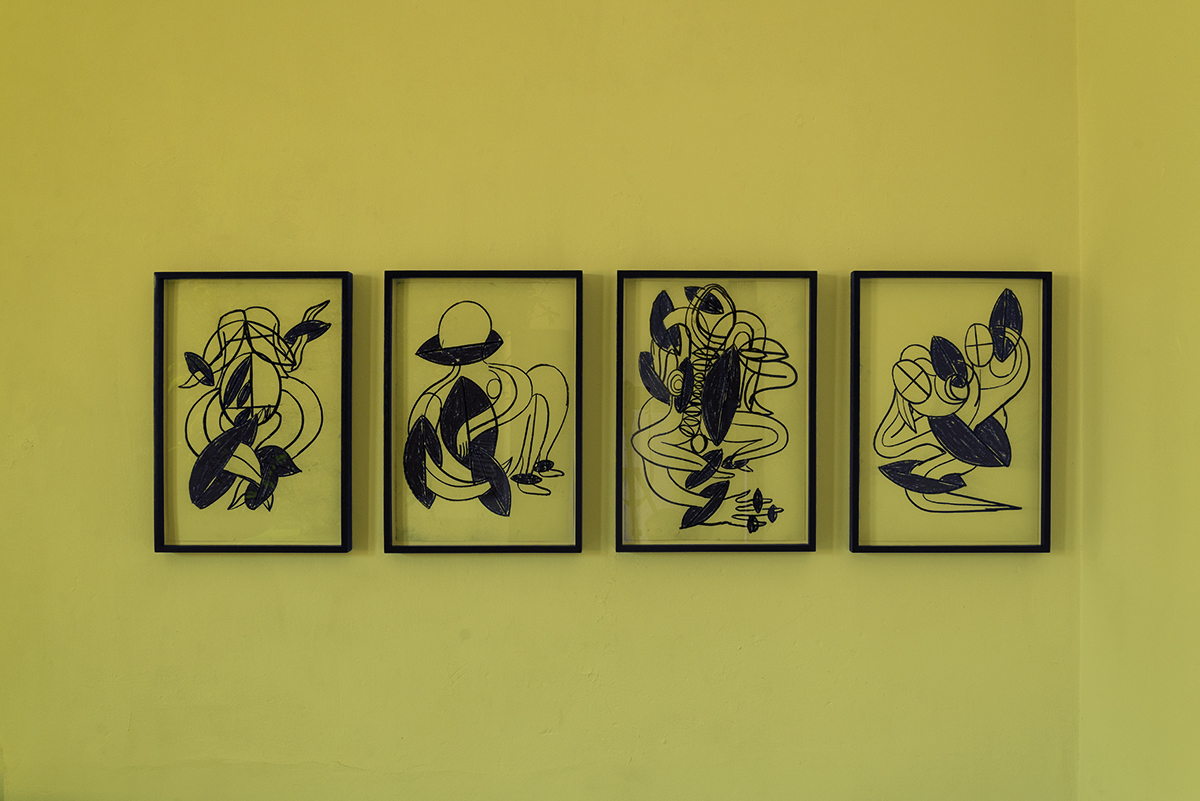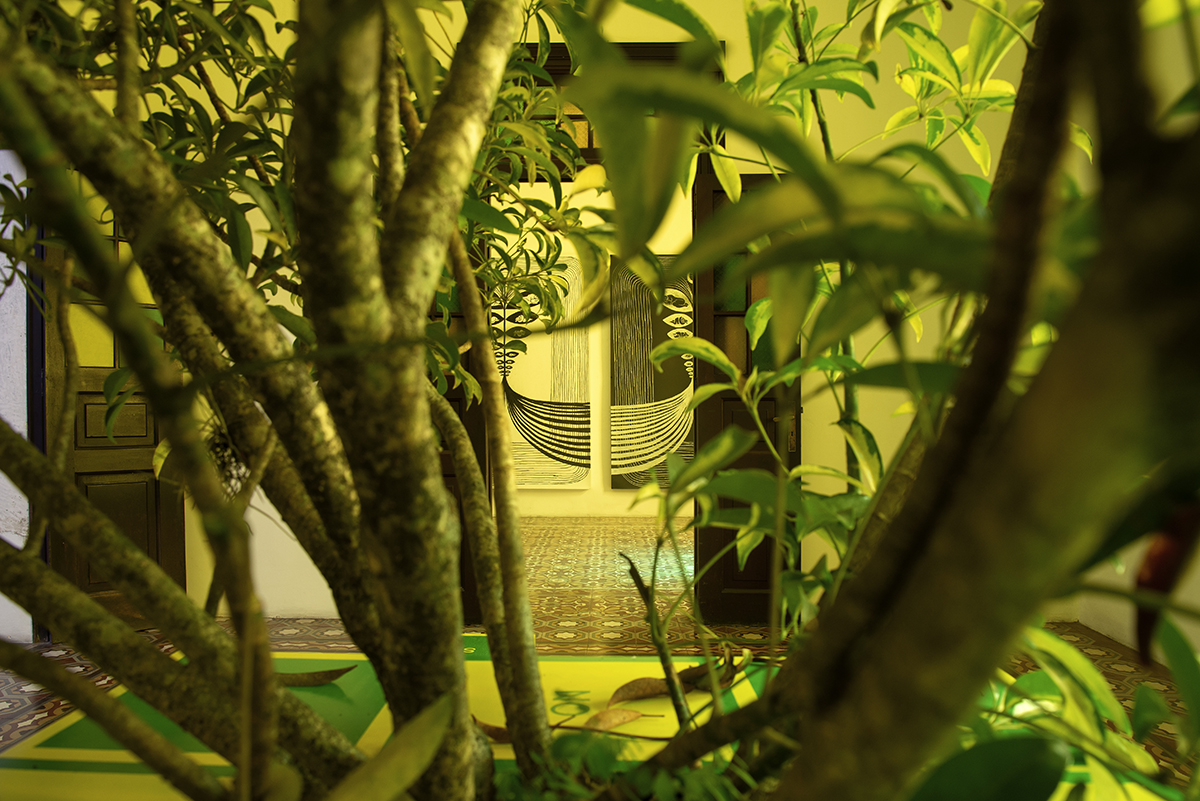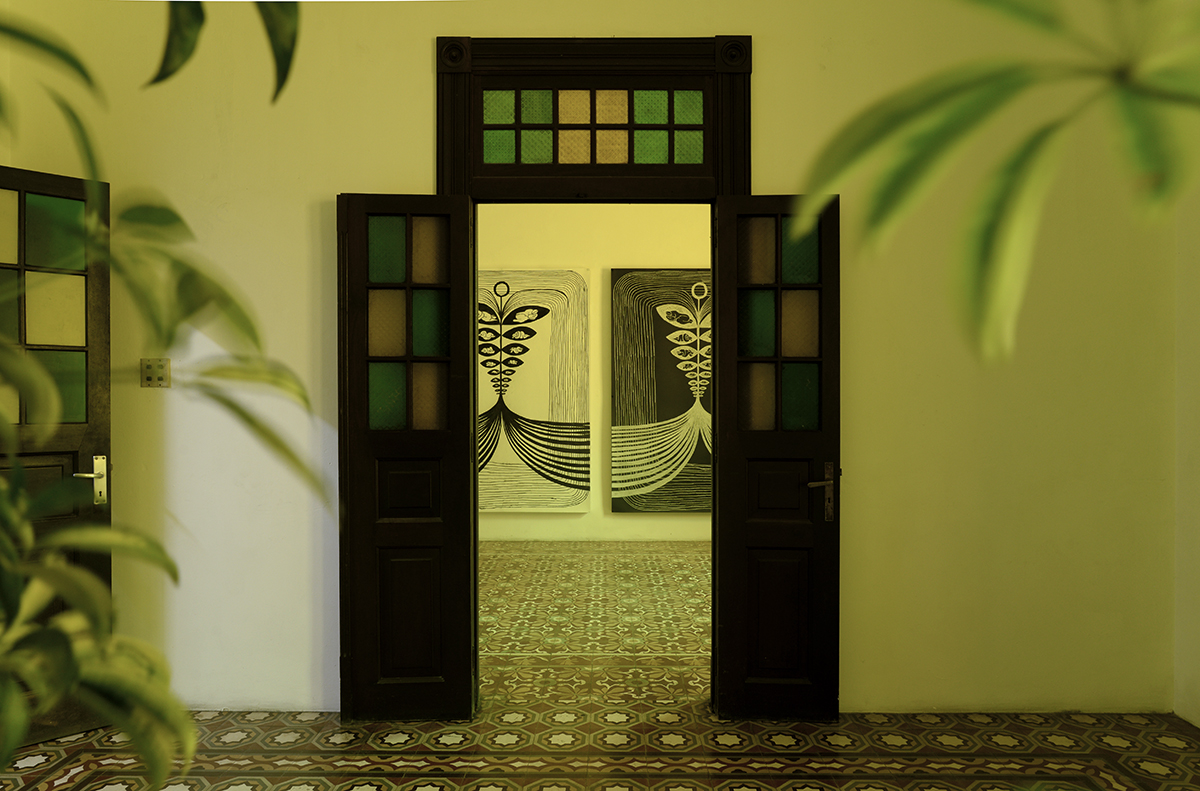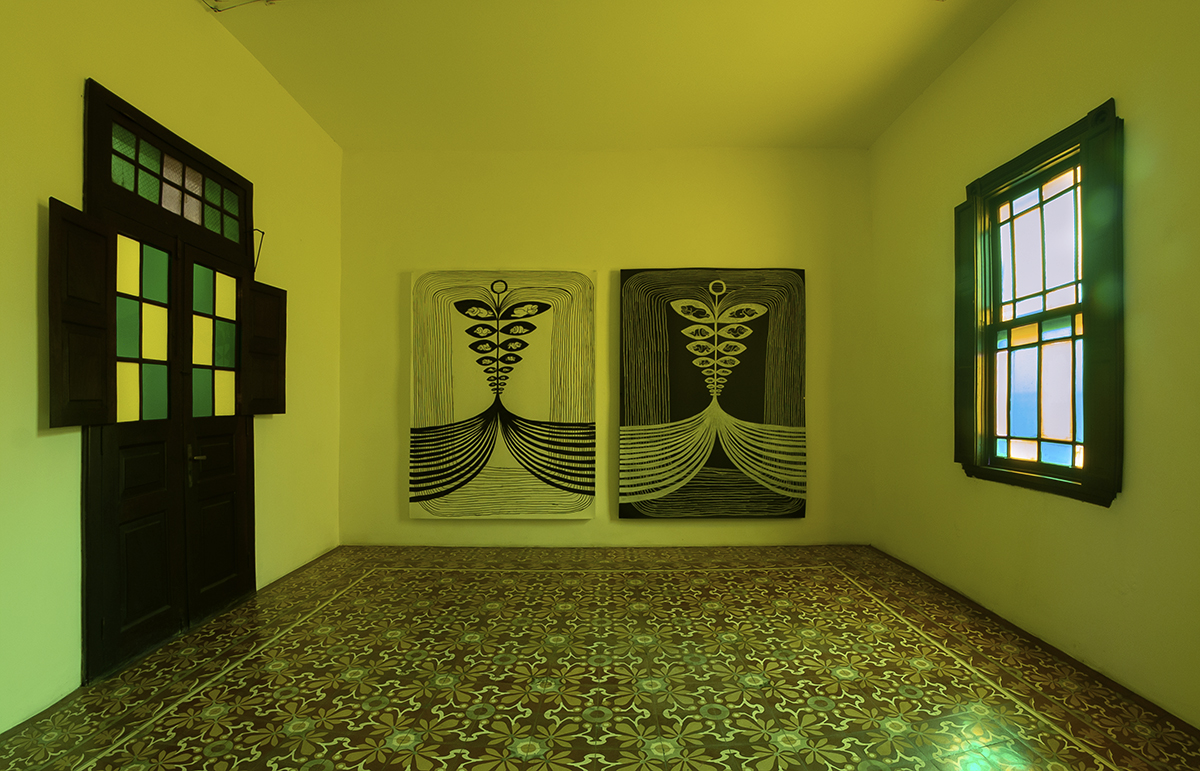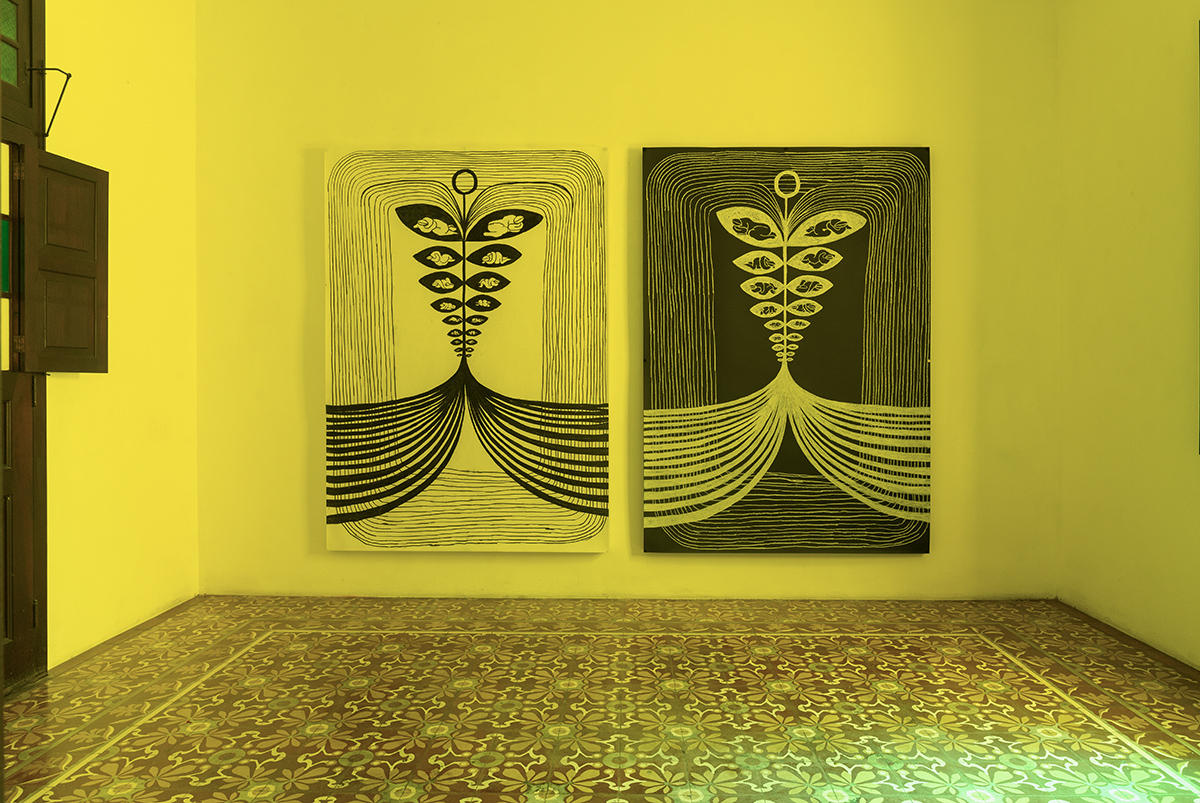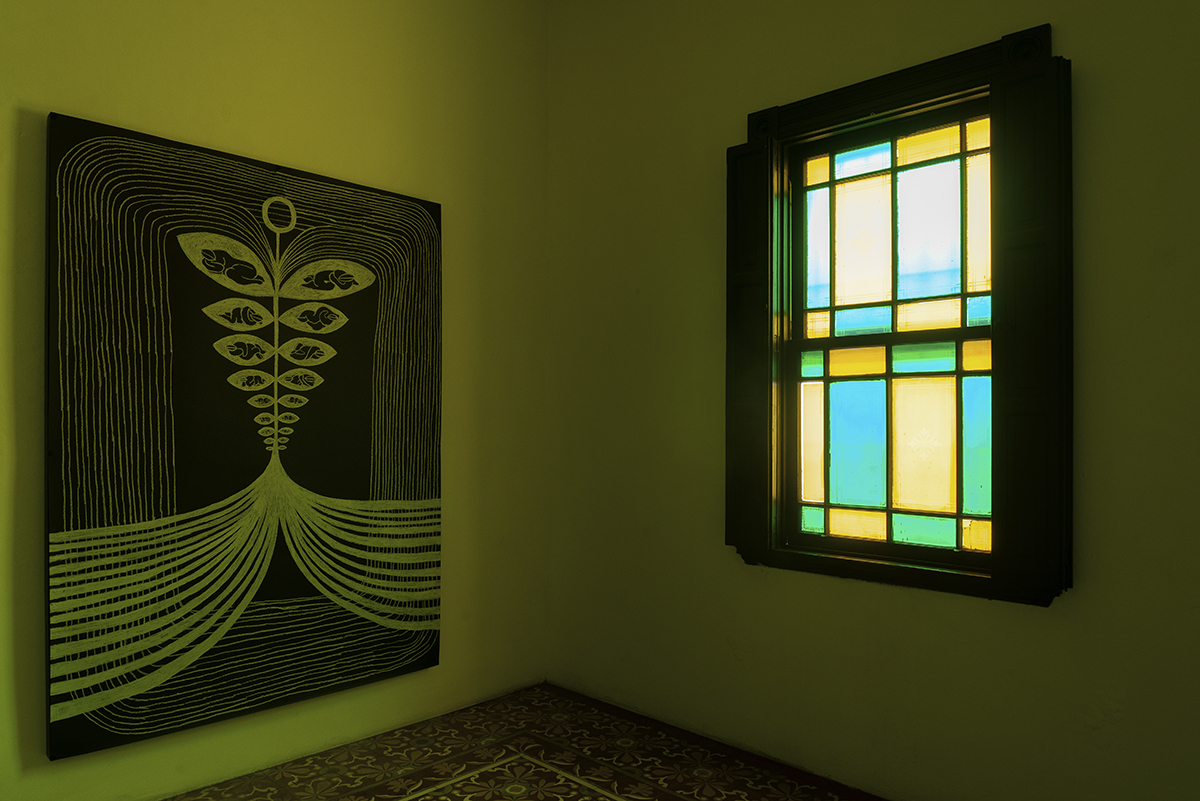vegetal ear
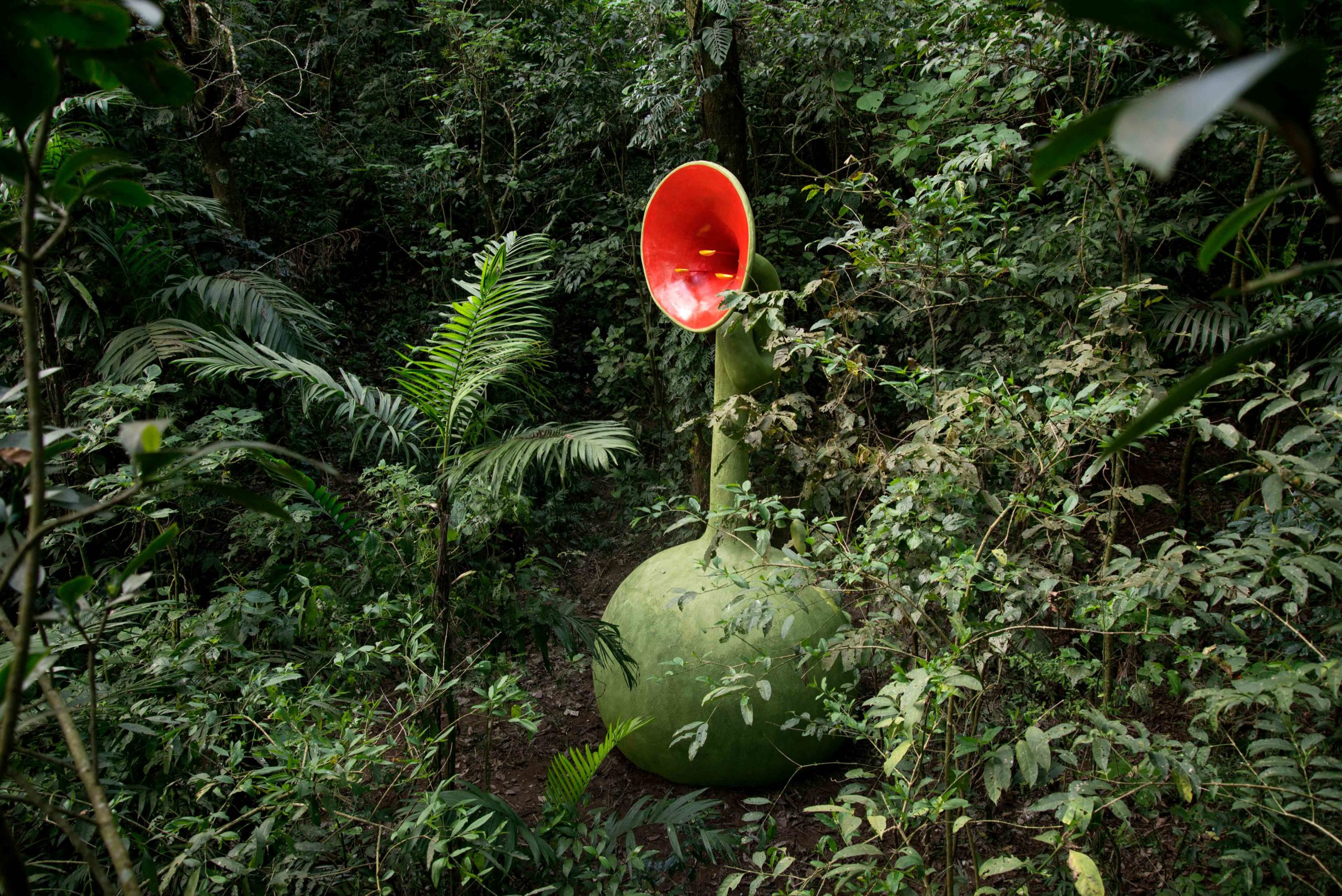
Proyectos Ultravioleta
Guatemala
Text By Barbara Rodriguez Muñoz
2021
The text of the exhibition Vegetal Ear is divided into three parts, which like a plant, its parts will grow over time throughout the exhibition and its involvement in the world:
Part One:
“The leaf, while it is attached to the tree”
A shiny red eardrum pokes above the lush vegetation of a broadleaf forest in Guatemala. Shaped like a large flower, with three yellow pistils acting like antennae and rain containers for birds to drink from, her auditory tube curls down towards the earth leading to a large green cocoon. Flowers are an extraordinary technology for inter-species communication: their ferocious beauty holds the intersection between plant and animal worlds, where evolution and reproduction collide. We are invited into this calm, sensuous, vegetal womb, which renders dark as we close its door. Plants have no organs, their functions are not concentrated in a
single part of their anatomy: they breathe, perceive, feed, and reproduce over their entire extension. Inside this vegetal ear, we lose our sense of vision in an exercise of expanding our auditory one, of perceiving throughout our whole bodies. The tube gently filters the sounds of the forest. Here we can practice deep listening. Yet there is no spectacle: it is just an act of contemplation. We enter a state of meditative consciousness, vegetal mindfulness, total self-collectedness, or ‘samadhi’.
As we walk out and step into the light, we appreciate the vegetal way of attending to the elements by being together with them, by becoming them: sunlight, moisture, air, warmth, soil. This gigantic flower, this public sculpture, becomes an emotional technology to develop elasticity, empathy, and contemplation. By entering this vegetal, expansive world we can imagine others more nourishing for all species. Perhaps in 7,000 years flowers will take control of all human infrastructures, telecommunications will occur via pollen, petals will provide shelter and roots will feed our descendants. Can we envision a future where plants become oracles and each of our decisions is consulted with them?
There are many ways to be a flower.
——————————————————————-
Part Two:
“The leaf, as it falls and decays.”
(the sound of leaves falling)
We are ejected from a yellow, rhomboidal shape floating in a charcoal universe. We open our eyes after 100 years of deep sleep. We
breathe green light. Wrenched, we move in circular motions, like circadian rhythms. We cross an ocean of ceramic Moorish flowered tiles. We arrive at a chapel.
“The soul is the greening power of the body” Hildegaarde of Bingen
(12th century).
(the sound of leaves falling)
We stretch an arm so far that it caresses all the walls of the room until it meets a door with green and yellow stained glass in a grid. As we open it, we interrupt a haphazard dance, in charcoal and blue pastel, of bodies and leaves tangling and crossing each other. We join in.
“Everyone wanted to be a plant, to eat through the skin, to forget their past, to let go of their organs” Eduardo Navarro (2022).
(the sound of leaves falling)
We arrive at a public square, conscious and carbonic. In its center, an umbrella tree invents games of chance while dropping its leaves. YES YES NO YES NO YES NO NO YES NO YES NO YES YES YES NO. We ask a million questions with our mouths swollen. Chance only concerns the finite, the body, our consciousness is bored.
“Trees define a specific way of making the world and making community”
Emannuel Coccia, (2017).
(the sound of leaves falling)
We lie in a frothy void of putrefaction and microbiotic activity. A tangle of fungi embrace and devour us. We are creatures of the earth
(“human”, from Latin humus: earth). As we merge with the umbrella tree leaves, we transform into what we become.
“As when a flower opens and reveals the heart it does not have”
Alejandra Pizarnik, 1968.
